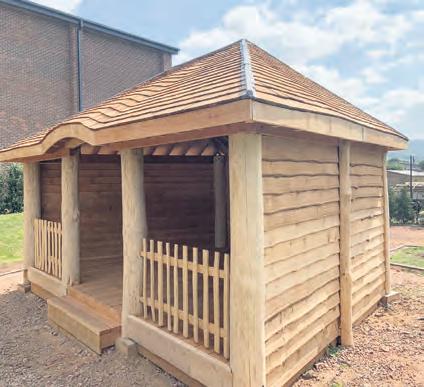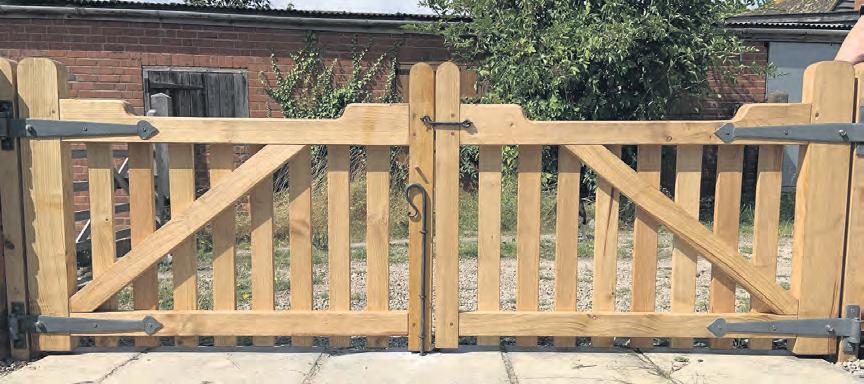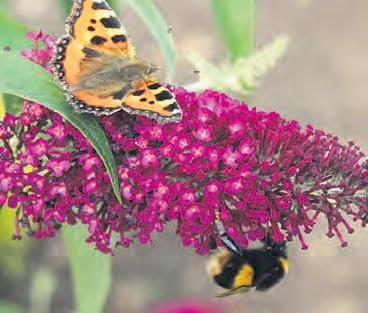



















There are two contrasting new openings in August for the National Garden Scheme in Gloucestershire when an exotic garden opens in Gloucester and the other a spacious garden around a manor house.


39 NEVEN PLACE, Gloucester GL1 5NF is a new opening for the National Garden Scheme, an interesting exotic small scale garden with a leafy, jungle look, on a relatively new development, featuring tree ferns, palms, bamboos, bananas, a rill, raised beds and artistic features among the gravel paths. It’s open on Saturday, 12th and Sunday, 13th August from 10.30am until 4pm, admission £3, children free.
The British Wildlife Photography Awards is a revered showcase of nature photography in Britain and a reminder of what value our woodlands, wetlands and other ecosystems still hold.

Each year, the winning images embark on a journey around the UK in a touring exhibition. Nature in Art is again one of the first venues on this popular tour. From 25th July to 3rd September the exhibition will be based at Nature in Art, Wallsworth Hall, Main A38, Twigworth, Gloucester GL2 9PA.
More than 13,000 images were submitted into this year’s competition, with amateur and professional photographers competing for the £5,000 prize.
The competition has several key aims including recognising the talents of photographers practising in the UK, whilst highlighting the great wealth and diversity of Britain’s natural history and celebrating British wildlife and wild spaces through a collection of inspirational photographs.
Tickets are Included in the admission price of the museum.
Two talented theatre troupes will visit Stourhead in August with an offering of magical open-air theatre performances.

The National Trust property near Mere will host Chapterhouse Theatre Company as they perform the much-loved classics ‘Secret Garden’ and Jane Austen’s ‘Sense and Sensibility’. Audiences will also be treated to lively renditions of Shakespeare’s ‘As You Like it ‘and ‘Robin Hood’, both performed by the Three-Inch Fools.
SECRET GARDEN Tuesday, 22nd and Wednesday, 23rd August, 4pm.
The most enchanting story, loved by children and adults alike, is set to be a highlight of the open-air theatre season. Chapterhouse Theatre Company present the tale of young Mary Lennox on her journey of discovery to unlock the mystery of the secret garden.
SHAKESPEARE’S AS YOU LIKE IT Friday, 25 August, 7pm.
The Three Inch Fools are dusting down their musical instruments and hitting the road once more with their take on Shakespeare’s classic tale, As You Like It.
ROBIN HOOD Saturday, 26th August, 7pm.
The Three Inch Fools present their take on the legendary folktale, Robin Hood. Fun for audiences young and old, expect fast-paced drama, endless costume changes, and much music-making.
JANE AUSTEN’S SENSE AND SENSIBILITY Sunday, 27th and Monday, 28th August, 7.30pm.

CALMSDEN MANOR, Calmsden, Cirencester GL7 5ET is another new opening for the NGS, on Bank Holiday Monday, 28th August, from 2.30pm until 6.30pm; with borders originally designed by Mary Keen, Calmsden Manor is a treat for plant lovers, design enthusiasts, and vegetable growers; herbaceous borders, a small arboretum, wild grass and flower meadow, woodland and walled garden for fruit, vegetables and cut flowers. Admission £10, children free, homemade teas, plants for sale and wheelchair access. Also opening in August is EAST COURT, East End Road, Charlton Kings, Cheltenham GL53 8QN, opening for the NGS on Sunday, 27th and Bank Holiday Monday, 28th August from 10am - 6pm, a garden on two levels, one traditionally styled with formal beds, lawns and three majestic purple beech trees some 200 yrs old, and a contrasting two and a half acre lower garden with winding brick paths, herbaceous plantings, walled area with exotic, unusual tender perennials and annuals, and a new pond. Admission £7, children free, homemade teas and wheelchair access.
Picnic in the beautiful garden and enjoy a night of magical theatre under the stars. Join Chapterhouse Theatre Company as Elinor and Marianne Dashwood make their first forays into the exciting world of Regency society in Jane Austen’s classic tale. Take blankets, cushions and camping-chairs.
“August means that summer is ready to sprint toward the finish line, but what a glorious journey it might be”.
- Anon
“There is a sadness in my garden about August which says there may still be good days ahead to enjoy but the real fun will not be with us again for a while” - Diana WestWinning wildlife images at Nature in Art museum 39 Neven Place Calmsden Manor East Court Three-Inch Fools will be at Stourhead
Enjoy magical summer walks...
beneath the cooling tree canopy, browse our garden centre and gift shop and enjoy delicious food whilst soaking up the sun from the deck of our café. A perfect day out for all the family – including the dog!
www.batsarb.co.uk
BATSFORD ARBORETUM AND GARDEN CENTRE
Batsford, Moreton-in-Marsh, Gloucestershire GL56 9AT.
Tel: 01386 701441 E: arboretum@batsfordfoundation.co.uk

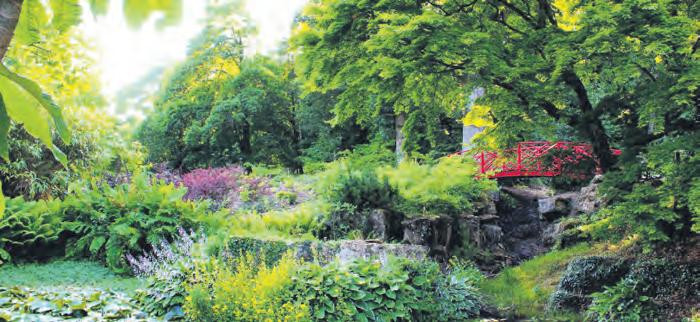
BatsfordArboretum@BatsfordA@BatsfordA
BUSCOT PARK & THE FARINGDON COLLECTION
BUSCOT PARK & THE FARINGDON COLLECTION
One of Oxfordshire’s best kept secrets
One of Oxfordshire’s best kept secrets
BUSCOT PARK & THE FARINGDON COLLECTION



One of Oxfordshire’s best kept secrets
Open 1 April - 30 September

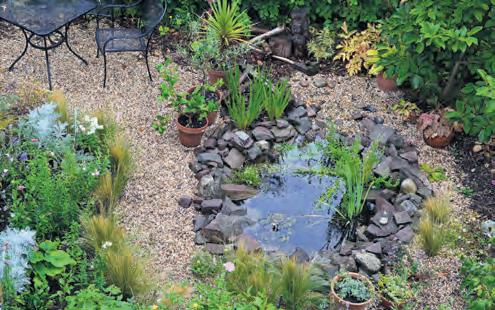
Fewer than one in five people who say they garden with nature in mind have a pond, despite the proven biodiversity benefits– and the Wildfowl & Wetlands Trust is on a mission to change this. Wetlands support more life than any other habitat on earth, and ponds are often more nature-rich metre for metre than larger water bodies such as rivers and lakes. Ponds support two thirds of all wetland plants and animals found in Britain and research has shown that these small wetlands in built-up areas can support similar levels of insect life to their rural counterparts.
New research shows that people are keen to help, with over half of the population currently gardening to attract more wildlife. However, one in three of these nature-lovers are missing out on one of the single most effective ways to help nature because they feel they don’t have enough space to create a small wetland like a pond. The new campaign is providing the answer, encouraging people to create tiny wetlands that can fit into any outside area no matter how small and often don’t need gardens. The charity is also encouraging people to get together with neighbours and community groups to create networks of mini-wetlands to help water-loving species move around.

Ambitious ten-year plans are under way to renovate one of England’s greatest gardens at Blenheim Palace. Andy Mills, head gardener at Blenheim, says the work will re-introduce the gardens to its former world class quality.
Many ‘lost’ features and elements which have disappeared across the last three centuries will be re-instated.

He said:“Our aim is to strengthen Blenheim Palace’s place on the world garden map. We are blessed with 90 acres of inspirational gardens; these plans will make them even more stunning than ever and truly blow people away. Hopefully, our visitors are already starting to see the changes which we’ve started to introduce”.
“One of the largest challenges that any gardener faces now is climate change. In addition, new threats to plant health crop up all the time. However, gardeners have always had to respond to such challenges which is why we have such fabulous gardens and gardeners on the planet.
“A garden is never truly complete. There is always something to do, however, we hope to have the Cascade and Rockery Garden area completed within the next five to ten years or so.
There are 14 of us in the garden team.
“Hopefully our visitors are already starting to see the changes.
“The path running from the Rose Garden down to the Temple of Flora and beyond is done; the pond at the Rose Garden has been dug out and holds water again; the ponds at the Walled Garden have been excavated, fenced and now collect rainwater again.


“I have been asking a lot of questions of the Garden team, plus I have been sending a lot of enquiries to The Blenheim archivist and our social historian.
“There are several very well-written historical reference books about Blenheim with some amazing anecdotes about the different Dukes and their preferred garden styles – a large part of my role is to identify who did what, why, when and who removed it and if it is feasible, sensible and worthwhile restoring it.”
Blenheim Palace, Blenheim Park, Woodstock OX20 1PP
The herbaceous borders in the Four Seasons garden at Buscot Park will soon be putting on their autumn colours. The walled garden was created by Lord and Lady Faringdon on the site of the former kitchen gardens. The tall brick walls create a warm, sheltered microclimate, and where melons, peaches and avocados were once raised for the table, now there are borders filled with perennials.
The planting, masterminded by Lady Faringdon, has been planned with the seasons in mind, so there is always something new to enjoy throughout the open season.
In the late summer and into the autumn, it’s the turn of dahlias, phlox, and the second flowering of the roses. Look out for eryngium (sea holly), penstemon ‘Dakota Burgundy’ and a striking new salvia, ‘Black & Blue’. For a few months, the garden returns to its kitchen garden roots, with ornamental gourds and squashes, marrows and rainbow chard in the beds, and figs, apples, and old-fashioned varieties of pears espaliered on the walls behind them. The gardening team also grow plants on site for sale in the shop, where you can buy young hibiscus grown from seed collected from Buscot’s trees. Tel: 01367 240932 www.buscotpark.com
You can discover the world of wildflowers and other flora at Westonbirt Arboretum and uncover the many uses, stories and traditions associated with each one at a series of guided walks on Tuesday, 1st August and Tuesday, 5th September.
The walks run from 10.30am to 12.30pm. Guided walks are free with paid admission to the arboretum and can be booked up to seven days in advance. (£1 booking fee applies). Meet at the Welcombe Building to start. Westonbirt, the National Arboretum, Westonbirt, Tetbury, Glos. GL8 8QS
The University of Bristol Botanic Garden offers professional Royal Horticultural Society courses for those who are looking to further their career or interest in horticulture. Set in a fantastic location within the beautiful botanic garden, the teaching room provides a welcoming and relaxed learning environment away from the demands of everyday life. Bookings are currently being taken for the RHS level 2 Certificate in the Principles of Plant Growth & Development for an autumn start. Part-time courses led by experienced tutors are available either daytime or evening, suitable for adults of all ages with an interest in horticulture.
Please visit botanic-garden.bristol.ac.uk/ to find out more.
University of Bristol Botanic Garden, Stoke Park Road, Bristol, BS9 1JG Tel: +44 (0)117 428 2041 Email: botanic-gardens@bristol.ac.uk
After four years of restoration, National Trust-owned Chastleton House’s garden is back to its original Jacobean format featuring a central sun dial.
Prior to the restoration, the garden’s flower beds had been turfed over, and only contained a circular hedge and cloud topiary.
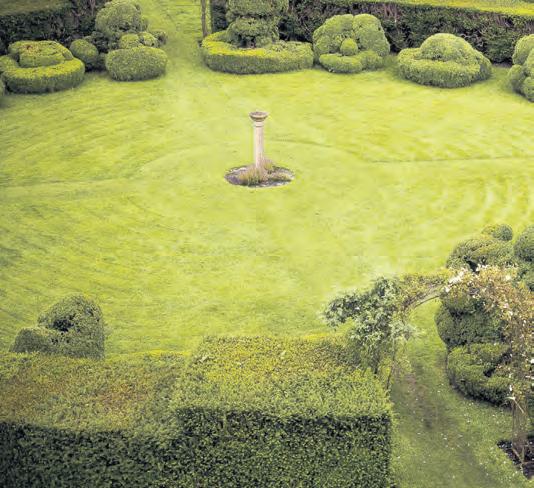
Now, thanks to the restoration team, two new circular hedges have been added, along with bedding circles, topiary and a narrow path to walk alongside it all.
Chastleton was owned by the same family for nearly 400 years.
In the early days of the 17th century, the family became impoverished, and due to them being unable to update the house, the house remained a ‘Jacobean time capsule’. This means that the garden has kept its original layout.
The garden is arranged in a cross shape around the house, with games lawns, public rooms in the house and a calm space in the South Court.
As the National Trust acquired Chastleton in 1991, a conservation garden plan was drawn up, which was not to fully restore it, but to ‘retain and preserve its faded and romantic air of decline’.
The restoration team broke ground in 2019 but were delayed in their progress by Covid. Head gardener Rosy Sutton said that “before the restoration, visitors would scuttle across the turf to the exit, but now, people stay for ages.”
Chastleton House Chastleton, Moreton-in-Marsh GL56 0SU
Walkers and gardeners across the Cotswolds are being warned about a deadly plant which could prove fatal to pets and humans. People are being told to keep an eye out for hemlock, which can be found in our gardens and looks like Cow’s Parsley. If it was eaten, hemlock could kill due to the fatal toxins it contains. They grow naturally and include gamma-coniceine and coniine, which can cause muscular paralysis.
Hemlock usually grows in wet, marshy places and is often confused for its non-poisonous lookalikes such as wild carrots or parsnips.
Plant expert Whitney Bromberg Hawkings said: “Water Hemlock, which bears a close resemblance to Cow’s Parsley can be found dotted across the countryside the second the sun comes out, but can also be fatal to animals and humans alike within minutes of ingestion.

“It contains a highly poisonous chemical that is lethal if ingested, not to mention its strong carrot-like odour which makes it a garden foe.”
The Gloucestershire Guild presents ‘In the Maker’s Hands - The Tools of our Trade’ a celebration of craft at the historic Arts and Crafts house, Rodmarton Manor from Wednesday, 13th September to Sunday, 17th September.
Crafts Alive is showcasing 50 skilled designer-makers from the Guild working across a range of disciplines and materials as well as featured guest artists.
The five-day celebration of the best contemporary craft for sale takes place over three floors of the house, the Chapel, and the garden alongside demonstrations, workshops, talks, performances and delicious locally made food and drinks.
Rodmarton Manor, nr Cirencester, GL7 6PF
Gardening club events and meetings in the Cotswolds. If your gardening club or association is getting back into full swing after the restrictions of the past couple of years be sure to let Country Gardener know. Send your club meetings and outings details to timeoff@countrygardener.co.uk
10TH
Alderton Gardening Club
PRACTICAL PROPAGATION DEMONSTRATION - ANDY PEDRICK
www.aldertonvvillage.co.uk/ alderton-gardening-club
12TH
Bishampton Gardening Club
SUMMER FLOWER & PRODUCE SHOW
Details on 01386 861438
17TH
The NGS is looking for a volunteer to join a small but friendly team in the Bristol area running publicity and social media. The position as Publicity/Social Media Officer is part time and the charity is interested in talking to anyone who has genuine experience in dealing with the media. For more information call 01454 615438 or visit www.ngs.org.uk
Dry stone walling remains one of the most popular rural skills to be learnt and they are much in demand. Two day dry stone walling courses are being held in August and September at Notgrove near Cheltenahm and are run by expert Richard Gray who is a professional member of the Drystone Walling Association (DSWA). You will spend two days learning about: dismantling walls and stone sorting, laying foundations and building up of the wall; adding through stones and coping stones; dressing the stone and different types of stone; the necessary tools and how to use them, plus much more. Dates include Thursday, 10th and Saturday, 19th August but there are other dates in September and October. Price is just £185 per person. No experience is necessary, and the course is suitable for people aged 16 and over.
All you need to bring is your packed lunch, drinks, a pair of gardening gloves and some sturdy boots. For more information and to book, go to: https://notgroveholidays.com/activities/dry-stonewalling-course/ Notgrove, Cheltenham, Gloucestershire, GL54 3BT
Bidford on Avon & District Gardening Society
‘HOSTAS & COMPANION
PLANTING’ - ROBIN PEARCE email: bidfordgardens@gmail.com
Churchdown Gardening Club
MONTHLY SPEAKER
Details on 07711 311716
Newent Gardening Club
‘SUMMERTIME IN WESTERN
SCOTLAND’ - MARY FENTON
Details on 01531 820761
19TH
Slimbridge Gardening Club
SUMMER SHOW
Details on 07442 163473
• Large selection of culinary and medical herbs
• Also over 30 varieties of chilli plants available

• Pesticide free, of excellent quality - and not hard on the pocket!

• We sell a large selection of herbs & various plants


• Our shop sells various sauces, chutneys, pickles, ice creams, chilli sausages and chilli burgers.
Telephone: 01242 603860
E-Mail: janeeayrs@gmail.com
Website: www.farmcoteherbs.co.uk

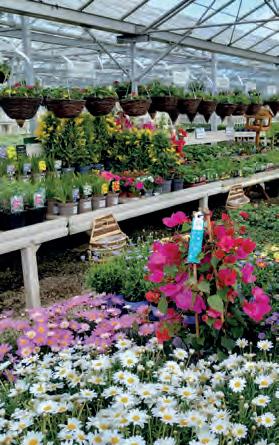

OPEN 6 DAYS A WEEK: Summer 9am - 5.30pm, Winter 9am to Dusk, Closed on Sundays.

Guarlford - Malvern - WR13 6NT 01684 562544 grangefmnursery@btconnect.com








Gardening with wildlife in mind
Practical, beautiful gardens that provide habitat for wildlife. Whether it’s a new planting scheme or a full scale re-design of your garden, please get in touch.
www.wild-side.org
EMAIL: rebecca@wild-side.org
TEL: 01989 565380 07908011934
Covering Herefordshire, Gloucestershire and Monmouthshire. Outside these areas will also be considered.

It may be high summer but that doesn’t mean there isn’t time in the garden to sow a whole range of vegetables to squeeze in some autumn harvests. It’s a time of year often neglected in the vegetable patch and on allotments.
August is a good month not only to harvest but to sown and plant for winter and spring. Sowing and planting out now will keep your growing season going, providing you focus on short-term harvests of salad leaves and other quick-growing crops such as radishes, along with longer-cropping plants like winter cabbages.
In ornamental borders and cuttings patches, it is a great time to get ahead and plan for the following year. Sowing hardy annuals now will give you an early crop of flowers in spring, while biennials sown in August will flower by the following summer.
Sown in late August, spinach can provide a crop of young leaves in October and then enter dormancy over winter, ready to provide a fresh crop of leaves in early spring. It survives harsh frosts and rain. Sow direct in well-prepared, fertile soil, and cover with a low cloche when temperatures start to fall.
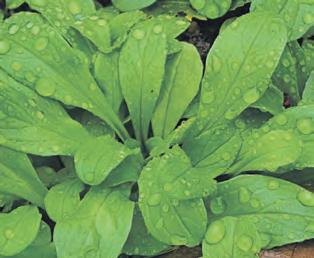
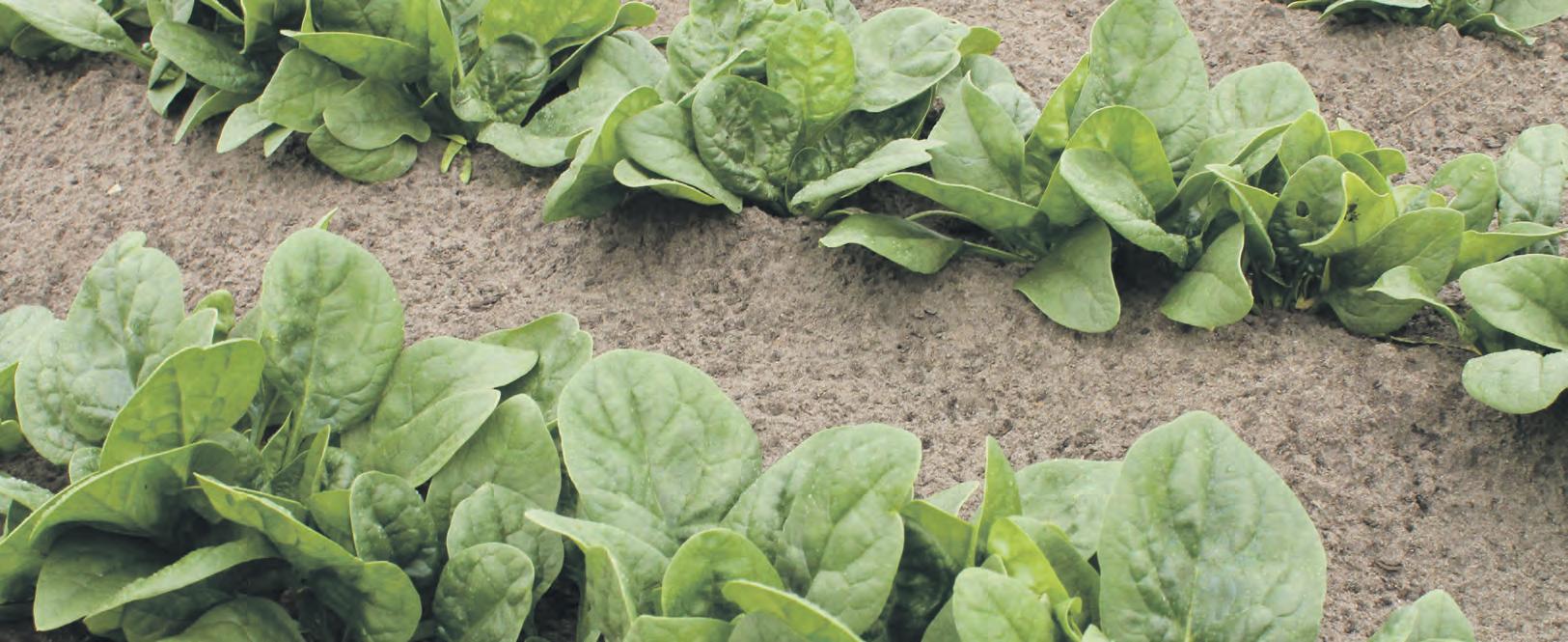
Hardier than they look, lettuces can be overwintered in greenhouses and beneath cloches, for picking leaves from April through to June. Growing lettuces all year round is now a real opportunity.


Fast germination makes oriental leaves satisfying to sow, whether direct in soil or in modules for planting out. This works better in wet summers. Sow three seeds per module, and thin to one or two plants. Cover with a cloche as temperatures begin to fall in autumn.
Corn salad is a delicious leaf crop that crops throughout winter. Sow direct in well-prepared soil and cover with a cloche when temperatures start to drop. Corn salad roots are shallow, so water regularly if under cover or in otherwise dry conditions.

Onions don't germinate well in temperatures regularly above 20°C, so bear this in mind when sowing in August. Either sow direct in rows outdoors, with seed covered by two centimetres of soil, or in modules, with up to ten seeds in each, for a harvestable 'clump' in spring.

Hardy chicory can be sown from February to September for a long cropping season, so continue sowing in August for a harvest over winter. Start the seeds off in a seed tray, before planting out in a sunny spot.
Chard can be successionally sown throughout spring and summer, but August is your last chance to make a sowing for a winter crop. Sow direct in shallow drills or in pots of moist, peat-free compost.
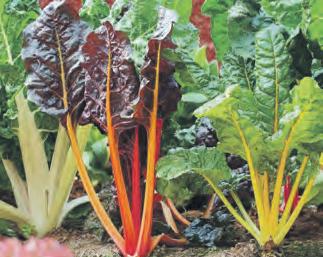
Despite their vivid, exotic appearance, California poppies, Eschscholzia californica, are hardy annuals, and will survive a winter outdoors. Simply sow where you want them to flower.
Colourful and easy to grow, Calendula can be sown in August and September, for flowers in the following spring. They're hardy, so simply direct sow them where they are to flower, either in shallow drills on the ground or in pots.
Forget-me-nots (Myosotis sylvatica) can be sown throughout the summer months and into September. A useful ground cover, they make a fine companion plant with tulips and will readily self-seed once established.
August need not be the end of the sowing season and quick growing crops and salad leaves offer tempting opportunities
TIMBER


Ireley

Open: March to November, Tuesday to Saturday, 2pm to 5pm Other times by appointment Broadway Road, Winchcombe, Cheltenham, Glos, GL54 5NY Tel: 01242 604160

Web: www.ireleynursery.co.uk
www.hintonsnursery.co.uk




5FJ 01926
Creating
Family-owned and managed “independent” Garden Centre, catering for all your gardening needs and so much more.
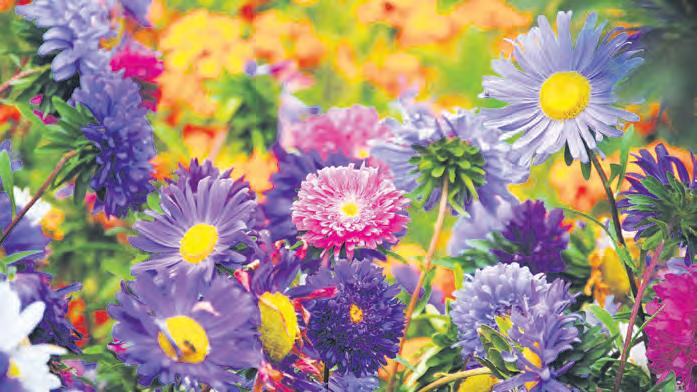
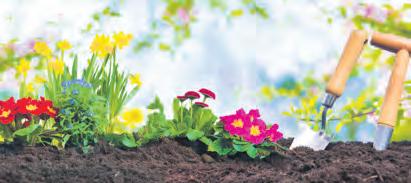

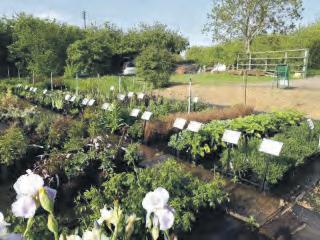

Stockist
FREE LOCAL DELIVERIES (WITHIN A 4-MILE RADIUS) Mythe. A38 Worcester Rd, Tewkesbury GL20 6EB


EMAIL: flowers@flowershedtewkesbury.co.uk


In response to your letter published in your June issue about dogs in NGS gardens. We enjoy visiting NGS gardens and if you look in their book there are many more which do not allow dogs than those which do. As we love to take our dogs with us, we only visit those where the dogs are really welcomed. Most people who own a dog treat them as part of the family, so get pleasure in taking them with them on days out. Most dogs are well behaved and do not cause as much noise or annoyance as small children can do. Can I suggest that people should only go to gardens where dogs are not allowed if they don’t want to meet one. Its called compromise and tolerance, something which seems to be sadly lacking these days.
Ms L Jeans Shaftesbury
I enjoyed reading your article about the young allotment holder from Somerset who had worked out for himself a system for designing old school Hotbeds. It was really inspiring. Especially in one so young and inexperienced. I know of several growers, both commercial and domestic who have long been making fantastic use of such otbeds, in one case with the heat generated by good old-fashioned manure and in another by wood chippings. The Hotbeds certainly do raise the temperature and act like giant heated mats for starting seedlings. In this age of the cost of lighting greenhouses and propagators perhaps more of us could trying these techniques even on a smaller scale.
Tracey Gaffety Wells
We moved into an old Devon cottage in early May and have just got round to discovering what’s in and around the garden. We found an old sink which has probably been lying behind the shed for decades, so I decided to clean it up and planted it at the end of the garden, made it watertight and filled it with water. We put it on bricks and added a couple of water plants. After watching patiently every day to see if it would attract wildlife as we were told nothing seemed to happen. Then we saw a frog one morning , then two followed by a whole range of insects and flying creatures. After a few weeks it is a wildlife haven. Who would have thought? It gives us a huge amount of pleasure for something so simple and means a lot that we are helping wildlife even if it is a couple of shy frogs.
Andy Thornbury by emailI had to write to you as I was so angry to read some of the letters seeking dogs to be banned from NGS Gardens Open. How ridiculous. What next? Ban children because they might be noisy and run around. Ban the elderly with walking frames as they are difficult to manoeuvre and get in the way. There’s a thing called common sense and understanding which I am surprised some gardeners seem very short of.
Lucy Greaves by email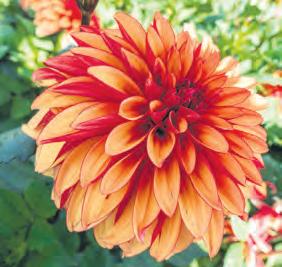
I know a lot of fellow gardeners who love dahlias and are always on the lookout for something different and special. I can recommend a variety I have been growing now for a couple of years. It is a real late summer star. It’s called ‘Tangerine Dream’ and it’s easy to grow once you have avoided any slugs! It is odd to think that it was only a few years ago when dahlias were branded as being vulgar and uncouth so thank heavens for changing fashions. This one is big and brash and bold and all the better for it.
Jacki Byrne by emailThere’s a feeling that rewilding is something which must be done on a large scale. I watched a television programme just the other week which suggested it only worked if you adopted the principle throughout the whole of your garden. I think just doing a small amount of rewilding such as having a corner left to nature where nettles and brambles grow and leaving ivy on trees to create habitat homes within the garden can have a massive impact. A garden is more than just plants and flowers. It’s about what lives there.
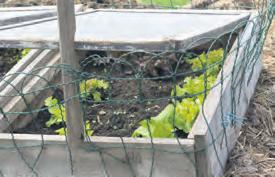
I have had my banana tree for about eight years and every winter I drag it back into the garage out of the worst of the winter weather. Last year I decided it was getting too big and I left it outside, firmly believing that the frosts would get it. I did wrap it in hessian. To my surprise this summer it has started to produce a small pod of bananas for the first time which is really thrilling. Maybe it's luck, maybe the frosts sparked something into life or maybe it is another indication of how our weather is changing down here in the southwest.
Suzy Hampston BudeFor the second year running I tried No Mow May and have encountered a problem here in Somerset: ticks. Lyme Disease is a known issue down here and I have always been careful when walking in the countryside but today was shocked to find two blood gorged ticks on my leg when I have only really been walking through the long grass for a couple of weeks. Hopefully the ticks will not be infectious but by encouraging wildlife into the garden perhaps there should be a warning they can bring in ticks so gardeners should be extra careful in checking for them especially if they have been in contact with the longer grass.
Alison Downing Ilminster

I am not always a great fan of the RHS for reasons I won’t go into, but I really support the stance they have taken to ban artificial grass from their flower shows. I have been doing what I can to campaign against this fake grass for several years. It has nothing to do with gardening, is made from odious plastic and the sooner the Government bans it altogether the happier a lot of us will be.
Cat Lewin DorchesterIntroducing

Conservatory Insulations C.H.R.I.S. ® system ensures the very best performance for your conservatory, giving you a room to use all year round, whatever the weather!




Having already installed over 30,000 systems to date, you can rest assured in the knowledge the C.H.R.I.S ® system is the very best available on the market today and is the only system specifically designed for conservatories.


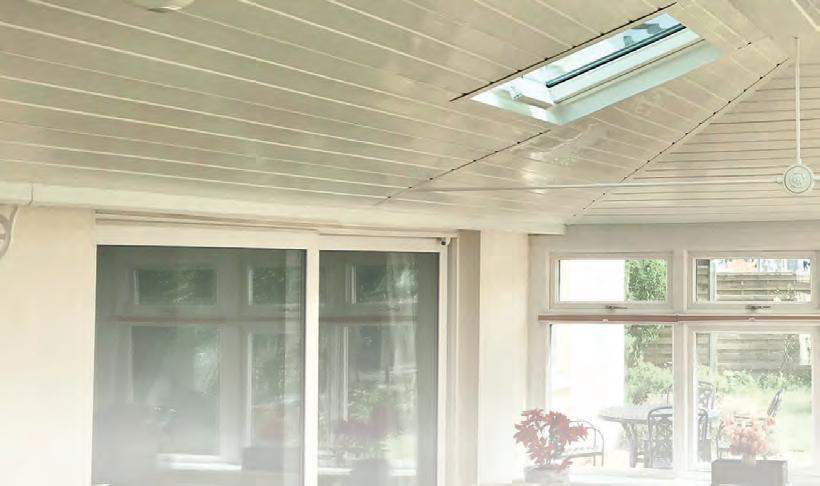
The C.H.R.I.S ® system is a cost-e ective solution which insulates your conservatory for a fraction of the cost of a new tiled roof. For complete peace of mind, we o er a 10 year insurance backed guarantee.

The priority for August is fairly straightforward-keep the garden going if possible August is dire for gardens, when many plants are already gone. But there are steps you can take for a colourful and healthy summer garden. August gardens can look weary, if not exhausted – but you can also stop the tired look by pre-emptive mulching with well-rotted organic material. Regular deadheading will also help a lot. Watering should be at the forefront of your mind - trying wherever possible to be sustainable and eco-friendly, supporting local wildlife. You may find that water butts are a bit low as there hasn’t been a great deal of rain, so greywater is a great alternative relieving pressure on mains water supplies.


Watch for any signs of blight on potatoes and tomatoes. Keep leaves dry on undercover tomatoes as blight enters the plant when the leaves are wet. The first signs of blight on tomatoes are large, dark-brown spots on the stems. Similar brown patches appear on the leaves but they are lighter in colour or grey. Some fruits develop dark ‘bruising’ and smell bad. If you spot an infected plant, pull it up.
The first signs of blight in potatoes are small, dark areas, often on the edges of leaves. Infected tubers have brown and purple skin blotches that go into the tubers.
If you spot blight on the leaves, cut off all the top growth to stop fungal spores spreading to the tubers underground. Then wait two weeks before lifting them.
• Roses should be deadheaded not only in the summer months but throughout the whole growing season.
• While you are deadheading your roses it is important that you remove the entire flowering head. You can do this by simply cutting the stem just above the first leaf that has five leaflets. Once you have done this you can then cut any disproportionately long stems to the height of the other stems to help keep everything looking neat and tidy.
• Deadheading has so many benefits, not only does it help clean up the appearance of the rose but it also controls the spread of seeds and encourages your flower to grow thicker and fuller than previously.
Cut back strawberries If you don’t want to create new strawberry plants using runners, it’s a good idea to cut back plants after they finish fruiting or they’ll spread very quickly. Remove any straw mulch and take out any weeds. New strawberry leaves will soon appear, so don’t worry if your plants look a bit bare after you prune them.
A coleus plant is a stunning genus of perennial herbs or shrubs. Their unique beauty stems from their gloriously vibrant colours and their shape. They come in different types of combinations of green, pink, yellow, red and so many more brilliant colours. They can be added to both beds and borders to add an extra element of character to your garden.
It’s very important that you maintain the beauty of these plants, you can do this by picking off any leaves or flowers that may be going through a stage of browning or discolouration so that the vibrant colour is not overshadowed or dulled down. Some coleus flowers can take on a slightly spiky texture, you can remove these if you wish but keeping them will not be a hindrance or harmful to any of your other plants.
Stop tomato plants by pinching out the tops in early August to prevent any more fruit setting, which can’t ripen before the cooler temperatures and lower light levels of autumn arrive. This way the plant will channel all its energies into the existing trusses of fruit and help them ripen fully.

Sowing annuals means you plant the plants that germinate, come into flower, set seed and then die all in the space of one year. This month is the last chance to sow the seeds for them to come into flower in the later summer months. The flowers that you should be looking to sow now would be both cosmos and nigella. These make a stunning addition to any flower bed and will be a beautiful flower to have in.
Cyclamen that have been resting over the summer can be started back into growth for winter blooms. Watering and careful replacement of the top layer of compost should be sufficient to ‘wake’ them.
Hyacinths, ‘Paperwhite’ daffodils, freesias, and Lachenalia corms can be planted in bowls now to achieve flowers for Christmas. Once they have put on say an inch of growth, they can be taken into a cool room, only to be brought into a warm room in time to flower for the festive period. Bulbs sold as ‘prepared’ can be forced by plunging the planted bowls in a cold, dark place for a few months, then bringing them straight inside to flower.
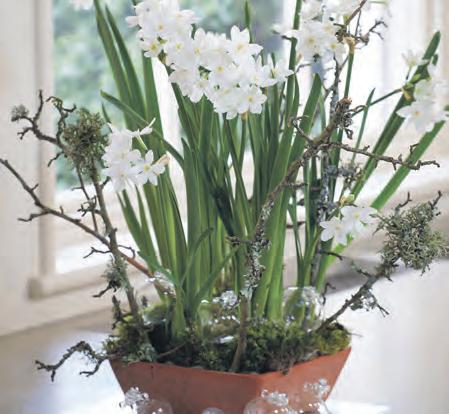
It is important to keep on top of the watering of your plants during late July and August as it is not uncommon to go through a prolonged period of dry weather. High temperatures mean that the soil dries up and therefore the plant finds it far more difficult to absorb water from the soil. The plants need this water to help transport vital nutrients from the soil into the plant.
Watering plants in peak heat will mean that a lot of the water will not fully soak into the soil as it will evaporate due to the heat.
High summer is when most of us tackle our hedges as the new growth begins to make them look untidy. If you’re using a hedge trimmer, start at the bottom of each side and work upwards in smooth, continuous swathes. Cut the top last. You can save time by spreading a plastic sheet beside the hedge to catch the clippings. Brush or rake the clippings from the top of the hedge, as leaving them will make it look unsightly.

August is a time when we should all still be thinking about the birds in our gardens. Provide a place for birds and other wildlife to drink and bathe with a wildlife table or create your own even if it is just leaving a pot or bowl of water outside and kept clean and fresh.
We are approaching the time when it is ideal to start collecting seeds. Harvesting your own seed is fun but takes a little understanding and planning. August is a time when all the fun starts.

Growing plants from seed is mostly straightforward and inexpensive. It is an opportunity to increase the number of plants in your garden for free.
Seedheads can ripen quickly, and must be watched carefully in order to collect the seed before they are dispersed
As a rough guide, seed is set two months after flowering.
Berries need to be collected before they are taken by birds.
The plants from which you collect seed must be healthy and vigorous. This will help ensure good quality seedlings and plants.
Most seed germinate best if sown as soon as it ripens, whereas seed harvested while immature will not germinate.
Compost grass clippings. If you don’t have a mulching mower, you’ll need to dispose of your grass clippings. It’s tempting to use the greenwaste bin but it’s a waste of material for the compost heap. To avoid the clippings turning into a slimy mess, mix other materials into them, such as cardboard, and add a spadeful of soil as trials have shown this helps them to break down.
• Sow late season potatoes for crops until Christmas.
• Sow spring cabbage, Chinese cabbage, corn salad, winter lettuce and radish seeds this month.
• Watch out for the symptoms of potato blight when conditions are hot and humid. Consider planting blight resistant potatoes next year.
• Pinch out the tips of climbing beans and runner beans when they reach the top of their supports. This focuses energy on producing good crops of beans.
• Water everything in the garden in the mornings and evenings to avoid evaporation during the day. Any crops that are in flower or have developing fruit on them must be watered well.
• Pinch out your cucumber plant side shoots just two leaves beyond any fruit that may be developing. Remove any old fruit on the plants to encourage further flowering and fruiting.
August is a month when it’s all change for many garden birds. By midAugust swifts have already left for Africa although swallows and house martins linger a little longer, gathering in flocks before embarking on their long migration. If you keep a bird bath topped up or a water bowl for the birds, you are still likely to get a lot of birds looking for water in dry weather when it may be hard to find.
Do birds nest in August?
The RSPB recommends avoiding hedge cutting during the main breeding season for nesting birds, which usually runs right through to August each year. This can be weather dependent, and some birds may nest outside this period, so it is important to always check carefully for active nests prior to cutting.
Is it a myth that birds stop singing in August?
It is true birds are certainly quieter in August It is simply because the birds are not feeling up to much at this time of year; they are tired and lethargic because they are undergoing their annual moult. Moulting, the changing of old feathers for new ones, is an important stage in a bird’s annual cycle.
Most adults stop singing as they are no longer defending their territories or in search of a mate. Instead, they are busy rearing their young and teaching them how to find their own food before they fly south for the winter.
Where do the garden birds go in August?
August and early autumn, bird activity is reduced in gardens as they undergo their annual moult –and so become less visible as they skulk at the bottom of bushes – and because many birds depart to the wider countryside to feast on the seasonal peak of seeds and fruits.
Is August a good month for birdwatching?
August is a great time to watch a wide variety of wonderful birds as they gather into pre-migratory groups and prepare to follow their parents back to their wintering home. House martins, green woodpeckers and kestrels are all in abundance.
Which birds are ‘on the move in August’?
In areas where farmland is nearby, house sparrows, starlings and many finches move out from gardens fields to feast on the abundance of grain before it is harvested, and on the split grain after the harvest. Depending on the location, this can cause a sudden disappearance of these birds from residential areas and gardens.

Should you feed birds in August?
Although winter feeding benefits birds most, food shortages can occur at any time of the year. By feeding all year round, you’ll give them a better chance to survive food shortages whenever they may occur.
How can I help my garden birds I if we get another August heatwave?
Turning your outside space into a home for nature by doing simple things like topping up your bird bath, creating a make-shift pond from a washing-up bowl, or putting down a saucer filled with water could offer a vital lifeline to some of our muchloved garden birds that are already fighting against declines.

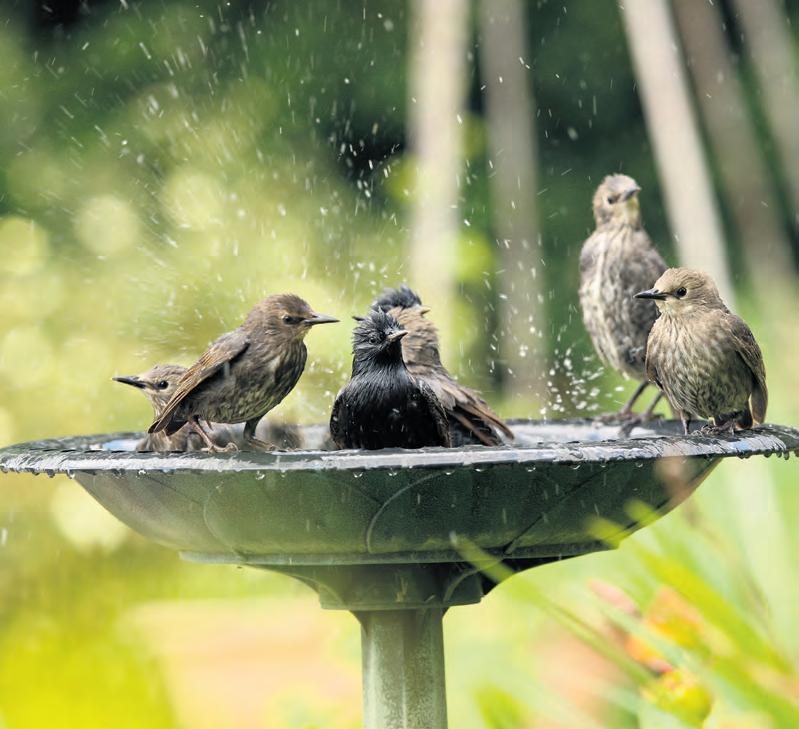

Another busy high summer postbag from Country Gardener readers . If you have a query or a problem you need help with then write to us at editorial@countrygardener.co.uk or to Mount House, Halse, Taunton, Somerset TA4 3AD
Will my young Acer circinatum be helped by pruning as it is looking sad for itself?
Diedre Williams Swindon
Normally you don’t need to prune this variety of acer but it will help shape it. Try pruning in the summer when you can see leaves in place. You might be able to restore its health by simply mulching around the trunk and giving it a spring or summer feed and making sure the moisture level is high.
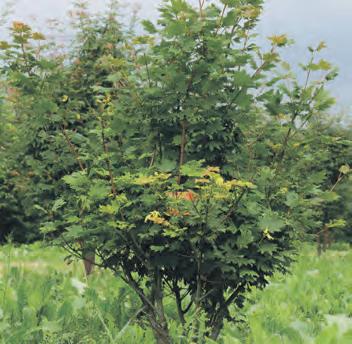
Can I grow a watermelon from saved seeds which have been given to me by my daughter?
Andrew Starling Poole

The answer is yes but there are some key things to consider. Melons are tender plants and need serious heat to germinate and grow. Start the seeds off in mid- to late April, sowing two per small pot, at a depth of half an inch to germinate; they need to be kept at 18–21°C (64–70°F), so a heated propagator is recommended. Normal greenhouse conditions may not be enough. A consistently warm, sunny windowsill may also be sufficient. Watermelon seeds have a germination period of only one to two weeks which also means there is little benefit in soaking the seeds beforehand, which is not necessary.
Can I grow the lovely trailing nepeta indoors? I love the plant and would like to add it to my houseplant collection.
Michela Davies Martock
Nepeta is very often sold for hanging baskets and is normally a variegated form of Glechoma hederacea or ground ivy.
It’s a native wildflower and won’t grow well indoors because the atmosphere will be too dry and there will not be enough light so the plant will have little chance of surviving. Try a variegated ivy instead as they are better in lower light.

How can I stop pear leaf curl which is both unsightly as I assume an indication that something is wrong with my tree?

Alan Dumbreck Cheltenham
Wilted or curled pear tree leaves may be a sign that your tree isn’t getting enough water. According to many sources, young trees need about a gallon of water every seven to ten days during normal conditions. During hot, dry weather, however, like the conditions we had in May and certainly June, your trees may need double that amount. The good news is that the curled leaves should recover with proper watering by late summer and not too much damage will be caused. It shouldn’t affect the crop in the autumn.
Why are onions so small and how do I stop them from bolting?
Dave Preston Lyme Regis
This may be a simple case of you harvesting too early. Onions have a set pattern during the summer. They will continue to grow leaves until the end of June and early July and then for the rest of the growing season will focus on swelling to form bulbs.
Bolting is common and natural in onions sown in autumn or grown from sets. It can be triggered by a check to growth such as a cold spell.
Is there any way of stopping birds from eating raspberries?
David Simonson Exeter
The only answer is to net your crop – ideally with a purpose build fruit cage which allows space between the top of the fruit and the cage itself. Throwing netting over your fruit won’t solve the problem and the birds will be adept at pecking away at the fruit between the netting.
Why do snapdragon seeds never seem to grow? I’ve tried several times without success.

Nicky Porter Yeovil
Snapdragons are notoriously slow to grow from seeds and can be prone in the early stages to fungal disease which can kill the seedlings. The problem is often overwatering and is certainly common in wet damp conditions or if old compost or dirty pots are used. Try again but make sure you fill new trays with fresh compost, sow thinly, remove any cover as soon as a seedling appear and be cautious as to when you water-doing so when you think the seedlings have almost dried out.
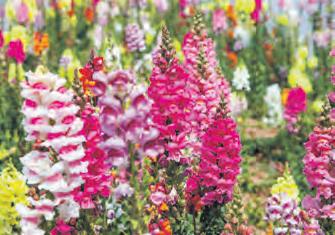
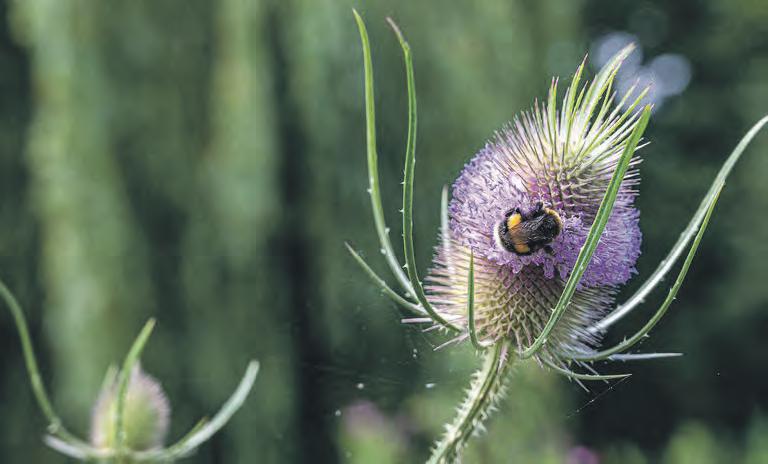
Susan Trenton
Taunton
Teasels are biennial so they usually flower in their second year and can be spectacular.
The rosette of leaves produces a tall stem up to two metres high.

Why hasn’t my climbing rose flowered this summer? I bought it in the spring, planted it properly in a clay soil and selected a good sunny spot where it gets eight hours of sunshine, I’ve been feeding it and although it has put on lots of growth there hasn’t been a single flower.
Climbing roses should be happy in clay soil and sunshine and it seems you have done everything to give the plant a fair chance. The answer may be the plant is a rambler rather than a climber. Rambling roses are more vigorous plants producing long wands of fresh growth in their first year. They only bloom in the second year. Each year you can cut out the flowered stems and then tie in the new stems to replace them. So, it may be a case of a wrong label being attached from where you purchased it.
I have had a very poor harvest from my rhubarb Abi’s Raspberry Red grown in a large pot. The stems were thin and not substantial and ended up producing nothing which could really be eaten.
Beth Collins Poole
Rhubarb isn’t really an ideal plant for a container. Some gardeners are successful putting them in pots but there seems to be more failures than successes. The compost for instance will be critical. A general multipurpose compost is not suitable for heavy feeders such as rhubarb and the plant will struggle to find enough nutrients to put on the growth spurt in late spring. They also need a lot of watering in containers. The best option is to grow in the ground. If you want to persevere in a pot try and get the largest one you can, use John Innes No 3 and feed in both spring and summer with a liquid fertiliser.
All my lettuces have failed this spring and summer. They were in pest resistant raised beds which makes it more mysterious.
Kerry Frost Minehead
The most obvious answer is if they have been attacked by pests. Raised beds are not a complete deterrent against snails for example. Also, woodlice are infamous for attacking seedlings. Then there’s the question of what they are growing in. If you decided for instance to grow in soil you may have introduced earthworms or millipedes. The good news is you still have the chance to try again this year.
My young plum tree has suddenly died. It was perfectly OK during the spring and looked to have plenty of fruit but during May something serious happened and the whole tree looks dead. I am not sure what has happened?

Lou Rowlands Taunton
There are also two serious diseases to be aware of. Silver leaf and bacterial canker can weaken or even kill plum trees. These issues are heartbreaking when they occur, to a once healthy tree. Another cause might be plum leaf curl is a malady indicated by tightly curled and deformed leaves which are usually near the ends of new plum shoots in the spring. Unlike leaf curl in peaches and nectarines, which is caused by a fungus, leaf curl in plums is caused by an infestation of the leaf curl plum aphid, Brachycaudus helichrysi
We are offering readers the chance to win a STIHL lawn mower and strimmer as part of Country Gardener’s 25th anniversary celebration tools which will make light work of maintaining your garden with cordless power for big garden jobs.
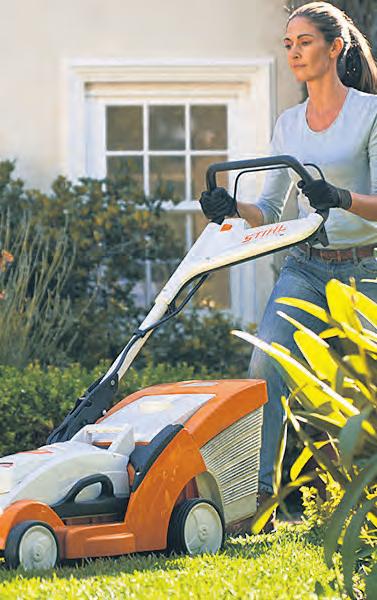
Garden maintenance can be hard work but that’s where STIHL’s powerful and durable garden tools combine outstanding quality and German engineering with perfectly balanced, lightweight and east to use designs.
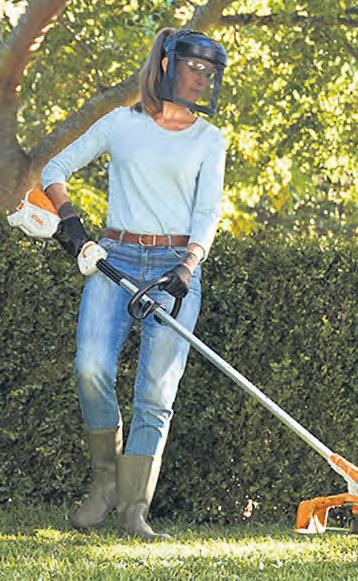
STIHL was founded in 1926 in Waiblingen, Germany by Andreas Stihl and has earned a worldwide reputation for quality and reliability.
The cordless range keep noise to a minimum allowing you to work both quietly and quickly.
Reliable and long lasting, the tools are powered by STIHL’s lithium-Ion 36V batteries so there are no restrictive cables and no emissions during use. It’s a safer way to garden.
The interchangeable batteries are compatible with all products in the huge range of STIHL range of high quality.
The cordless mower we are offering as a prize is the RMA339C which is easy to manoeuvre and offers an impressive cutting performance FSA 60 grass strimmer.
All you have to do is answer this simple question and send your answer on a postcard to STIHL Competition, Country Gardener, Mount House, Halse, Taunton Somerset TA4 3AD.
The closing date is Friday, 1st September. The completion will be announced in the October edition of the magazine.
We all know about sunflowers, right?
Big bright-yellow daisies as tall as you, or if you want, the size of a house. Easy to grow. Well, it’s time to think again.
First ,there’s more to sunflowers than the colour yellow! Sunflowers now come in cream, orange, maroon, purple and an almost chocolate black.
There are sunflowers that produce no pollen to stain your furniture and there are even varieties which produce no seed but root easily from cuttings, So it's wrong just to think of the humble sunflower as a one product performer.
In all there’s more than 70 varieties, and they now come in of different sizes and colours. Sunflowers are one of the easiest flowers to grow. In addition to being drought-tolerant and pest-resistant, sunflowers love the summer heat so much that they’re known for heliotropism, a behaviour in which plants move throughout the day so that they’re always facing the sun.
• Sunflowers are some of the best low-maintenance flowers. While they need water to grow tall, they don’t do well with overwatering. Sunflowers would rather have too little water than too much.
• Sunflowers have long roots that need space to spread out. For average sized sunflowers (about three feet tall), space your seeds about a foot apart. Looking to win a prize for the tallest sunflower at your local fête? Think about planting your seeds about three feet apart.
• Because of their height, sunflowers can be susceptible to damage from wind. Plant yours along a wall or fence for built-in support.
When selecting seeds keep in mind that sunflowers can be categorised into three groups: tall, dwarf, and coloured. Tall sunflower varieties can grow up to 15 feet tall. The tallest sunflower on record measured in at 30 feet tall!
Dwarf sunflower types only grow to be about three feet tall and are perfect for small spaces such as garden boxes and planters. Sunflowers also come in a variety of colours now thanks to hybridisation.

Annual sunflowers need plenty of water. Feed them with tomato feed just before flowering. Don't allow plants to dry out as very tall varieties will have a job to recover. Very tall varieties may need the support of a garden cane.
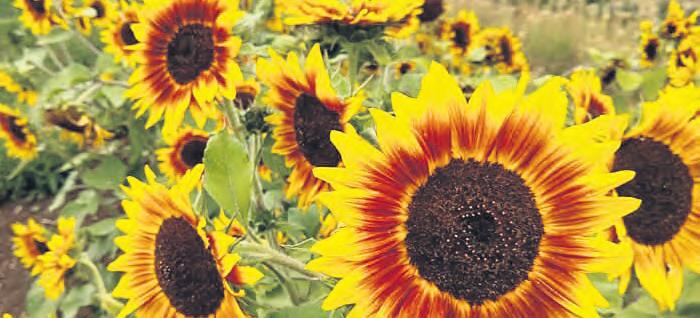
Sunflowers are sun worshippers that grow best in spots that get six to eight hours of direct sun per day. They have long tap roots that need to go several feet into the ground, so sunflower plants prefer loose, well-drained, somewhat alkaline soil with a pH of 6.0 to 7.5.
You can buy perennial varieties which will return to your garden next season without involved effort from you. Other cultivars, of course, must be reseeded, but that does give you a chance to plant different varieties in new colours or heights.
'CHERRY ROSE':
Blissful two-coloured sunflower of rosy-mahogany tipped in sunny lemon with a velvety dark centre disk; grows five feet tall and can be very spectacular.
'PEACH PASSION':
Beautiful branching type to four feet tall, with peach coloured blooms and a light centre disk. Produces masses of pollen free flowers and are exceptional cut flowers.
'RING OF FIRE':
Its clear how the name derived multi-branching double colour which grows to four feet tall, with five to six inch flowers surrounding a richly coloured dark disk and glowing rays of petals from dark red at the centre to golden yellow at the tips. Make a wonderful cut flower.
'SORAYA':
Dark and dramatic mahogany centre disk surrounded by halos of luminescent deep orange petals growing six feet tall.
'STRAWBERRY BLONDE':
A rosy pink is the main colour with this variety which grows to five or six feet .Multibranching with a dark centre disk surrounded by rays of rosy pink touched by subtle yellow.
• Grow them as a joyful addition to the late-summer garden. They look great in the back of the border or along a fence or wall.
• Add them to your cutting garden and use them in arrangements. Look for sunflowers that are pollenless and have sturdy stems.


• Use them to attract birds, bees and butterflies-they are great for pollinators while in bloom, and their seed heads can be dried and set out for the birds during winter.
• Plant them as a companion plant in vegetable gardens. The sunflower is often used to accompany sweetcorn and beans.
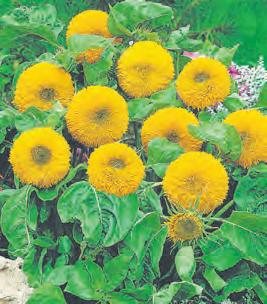
• Grow sunflowers to inspire, delight and educate children. Kids are amazed at how quickly they grow and how enormous the giant types become.
If you are looking for something different when it comes to sunflowers try the fluffy petals of the 'Teddy Bear’ sunflowers. These sunflowers can grow to about two feet tall, and their edible petals can be fun to use for salad toppings or cake decorating. It's a dwarf multi-headed variety which is spectacular on patios or borders and a great cut flower.
Multi-coloured sunflowers are now becoming a popular alternative to the traditional bright yellow varietyand they are great fun to grow'Cherry Rose' 'Peach Passion' Multi-colour






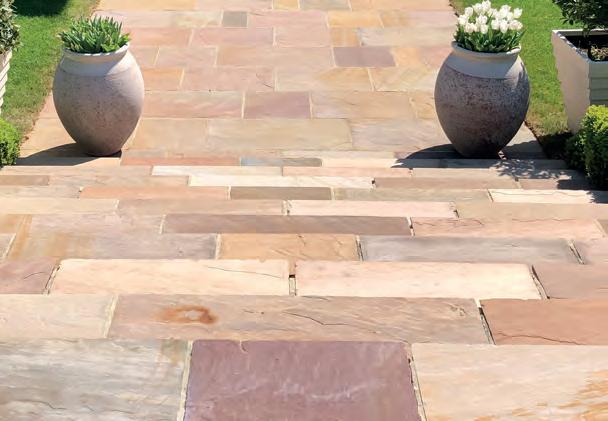
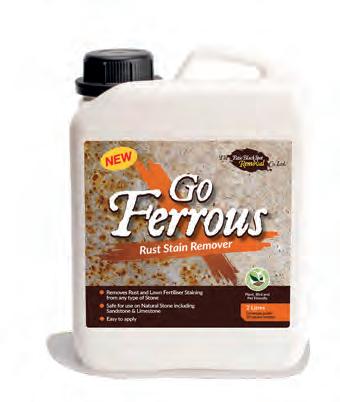

Running a houseplant shop was not the plan for Rob and Frankie Vincent.
In 2017 the couple were planning to open a pub - in a bid to escape going back to ‘proper jobs’. This plan turned into a city centre bar, and when plans for that fell through, they hatched plans to open a short-term pop-up shop selling terrariums and houseplants called Hutch.
Six years on the couple are settled into an everbigger premises and are loving spreading the joy of houseplants in Exeter city centre.
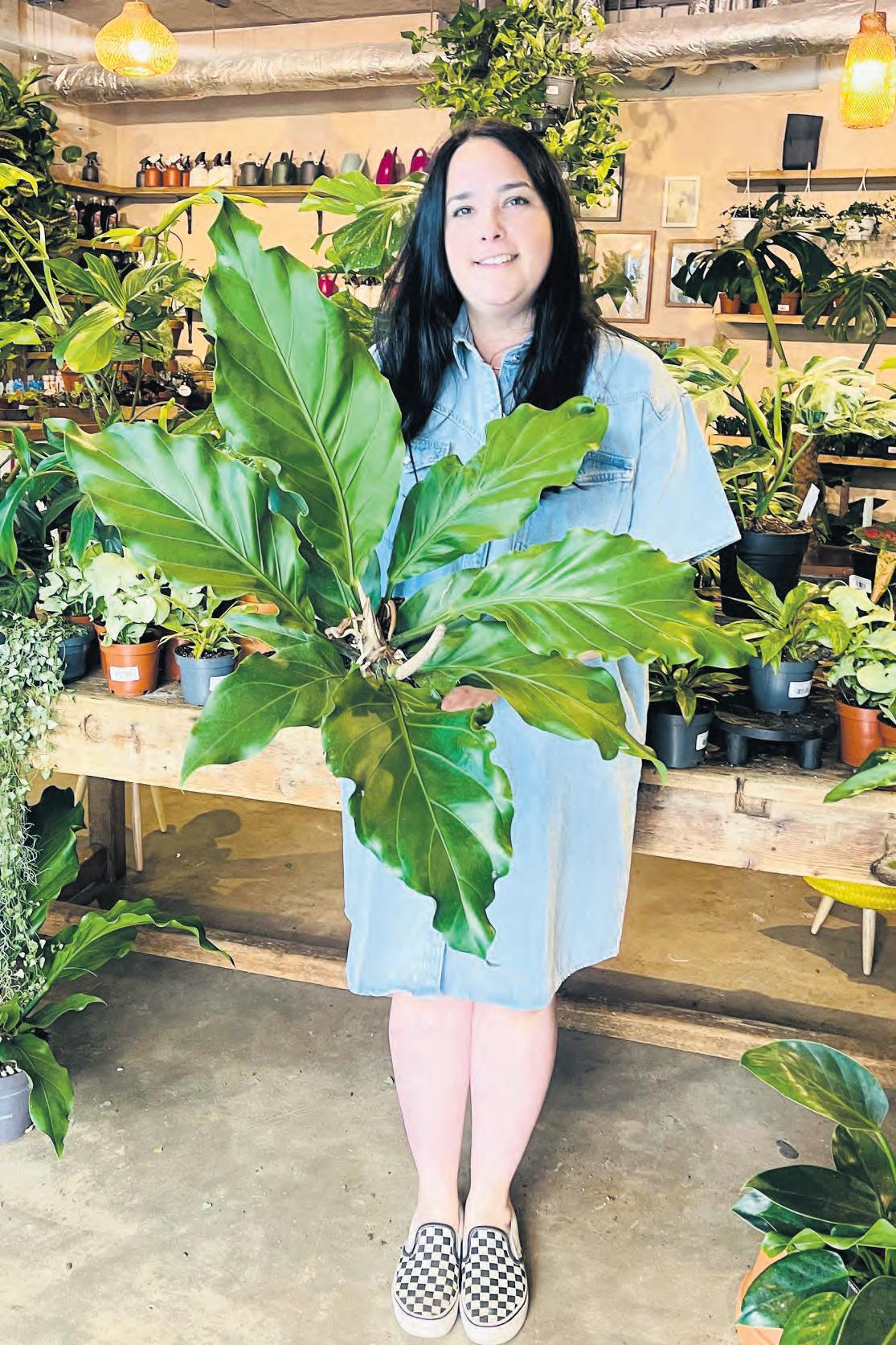
The idea for a houseplant shop was born out of Frankie’s love of terrariums - she had been making and selling them at fairs - and her own houseplants.

She said: “We were looking at buying a pub and struggling to find somewhere that was affordable and the right place. I joked to Rob that we could open a popup houseplant shop. We had a lot of plants at home and thought we could make it work for a few months, and here we are six years later in an even bigger premises.”
Last year they moved into a bigger premises on Bampfylde Street - an opportunity to expand and design the space themselves.
“It was a shell when we took it on, we had to do everything in terms of electrics and plumbing. But it’s given us the opportunity to put in all the features that we’ve wanted for years”.
Hutch Plants is literally an urban jungle of a shop, thousands of high quality houseplants in a store which has become a Devon talking pointHutch Plants has earned itself an outstanding reputation for quality plants Frankie Vincent: "I wanted to provide a really good customer advice service"
Walking into Hutch is like entering a lush urban jungle - wall to wall with thousands of houseplants and accessories. Customers range from children wanting to buy cacti, to the older generation wanting statement pieces for their homes, and everything in-between. But they didn’t open the shop just to sell. Frankie said: “I wanted to provide a really good customer advice service. A lot of places that sell plants don’t really know about them and I wanted to be able to help and advise people on how to care for their plants. One of the reasons we are different is that they don’t have to have bought their plants here to come and get advice.”
Another arm of the business is plant maintenance around the city - going into offices and restaurants watering and looking after their plants and advising, supplying and installing plants for businesses across Exeter. Sales of wall installations - both in businesses and private homes - have also really taken off in recent years.
“Of course, there are decorative purposes but since Covid businesses have been really interested in having plants for health purposes too. People are so much more aware of the mental health benefits of having plants in offices and companies are really taking this on board, so this is a side of our business that has really taken off”.
“People are also increasingly more interested in house plants for environmental reasons - flowers are lovely but they do end up in the bin, whereas house plants last so we are seeing a real increase in people buying them for special occasions like Mother’s Day, birthdays and Valentine’s Day.”


A recent study indicated that houseplant sales have increase by 50per-cent in the past few yearslargely down to the pandemic. But the popularity in houseplants continues to grow, and along with it the interest on how to maintain them.

Frankie and Rob run regular workshops in the shop and in local garden clubs - these include a Houseplants 101 which teaches people the basic principles of how to look after plants in the home.
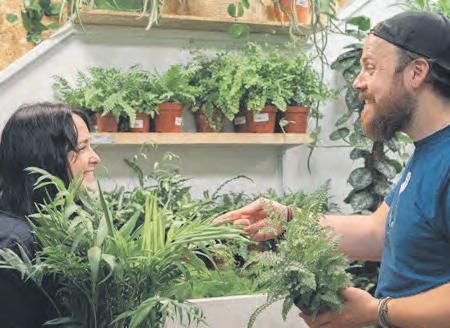
“Killing houseplants is the biggest complaints we get!”
Frankie said. “The biggest mistake people make with houseplants is over-watering - I think people panic and feel that they have to water a plant every single day but you don’t. Outdoors is a whole different world to indoors.
“Most houseplants like to dry out in between watering. If you water too often you end up with root rot.
“People will also sit a plant planted in a plastic pot inside a ceramic pot. When they water it the plant ends up sitting in a swimming pool of water which can result in root rot.
“The better thing to do is to take it out of the ceramic pot and water it over the sink, let it drain through and then put it back.”
Another factor that has greatly influenced the popularity of houseplants is social media, with Instagram dictating trends about which plants are fashionable.
“Instagram has been a massive trend-setter for the indoor plant market in recent years. It drives sales and also prices”, Frankie said. “A year or two ago the Chinese Money Plant was very popular and now the variegated Monstera are hugely popular.”
“One of the most interesting families are Philodendrons - these are very much collector plants and hybrids are always being created which keeps us on our toes.”
1. Sansevieria (Snake Plant / Mother-In-Law’s tongue) Easy to care for, thrive in dark and light spaces. Good air purification plants.

2. Zamioculcas zamilfolia (Aroid Palm) These are very drought tolerant, slow growing and very hardy.

3. Aspidistra elatior (Cast-iron Plant) Very popular in Victorian times and known as the’ cast iron plant’ because they are so hardy.
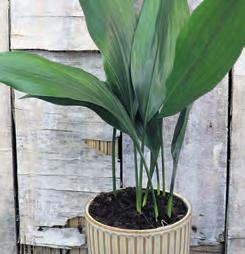 Frankie and Rob Vincent - passionate about plants
Zamioculcas zamilfolia
Frankie and Rob Vincent - passionate about plants
Zamioculcas zamilfolia
Benson Bush, Itton, Chepstow, NP16 6BZ
q 07860646613
E adam@theseeddetective.co.uk
Ħ www.theseeddetective.co.uk
1. MEETINGS WITH REMARKABLE VEGETABLES – From wild parent to cultivated offspring
2. THE SEED SAVERS OF RAJASTHAN - Uncovering the remarkable world of local varieties and their conservation.
3. THE ADVENTURES OF A SEED DETECTIVE – Finding rare and endangered vegetables around the world
4. SEED SAVING MADE SIMPLE -It’s easy and fun to save your own flower and vegetable seeds
5. THE GARDEN ABOVE THE ESTUARY – Transforming a meadow into a productive garden to grow vegetables for seed
6. THE GARDENS OF THE MEKONG – A voyage of discovery revealing the secrets of vegetable cultivation along the river
7. THE CULTURE OF SEED SAVING –Continuing a 12,000-year-old tradition of conserving and celebrating delicious vegetables
Adam is an author (The Seed Detective), and filmmaker having spent a lifetime growing his own and producing food and gardening programmes. He collects rare, endangered vegetables from around the world saving and sharing their seeds. He has appeared on Gardeners’ World, CNN’s Going Green and The Great British Food Revival.
£B
Welcome to Country Gardeners’ annual guide to gardening speakers and lecturers offering their services to gardening clubs and associations.
Over 300 garden clubs and associations through the south and south west have been back in action this year after a tough few years following the Covid pandemic.
So many who were forced to shut down three years ago have taken time to reform and have the confidence to start putting together year long programmes for their members.
So, it seems gardening clubs and associations are set for a bumper autumn and winter of activity and speakers.
It has always been a tradition that gardening clubs plan visits and trips out during the summer but rely on visiting speakers to entertain their members during the more restrictive autumn and winter months. Which means everyone is looking for the right gardening speaker to captivate members
Every year Country Gardener has been able to produce an effective list to provide an invaluable aid for speaker options, ideas and subjects. We have full details on each speaker including a synopsis of the subjects they talk on, what they charge and how far they are willing to travel. If you come across speakers who you have been impressed with let us know and we will try and include them in a future edition of the magazine and update our online information.
35 Wembdon Rise, Bridgwater, Somerset TA6 7PN q 01278 451814 / 07788593674
E rvcheek@btinternet.com
1.Chelsea Flower Show - Creating 20 different silver and gold gardens and displays.
2. Irresistible garden plants for Butterflies - Bringing them winging in by adding carefully chosen plants.
3. Insectivorous plants - Discover new hardy year round attractive ones for the garden or the windowsill.
4. Fascinating Gardens - Choose from 50 regions worldwide from Cornwall to Costa Rica.
5. Holly & Ivy - New kinds and uses. Fascinating finale.
Many other talks, ask for details. Widely experienced and qualified, Roy progressed from Gardener to Director of parks and gardens around Britain. As senior lecturer and curator of gardens in Somerset he amassed ten thousand different plants, ten national collections and created new hybrids, diverse gardens and gold medal exhibits at Chelsea. Now Chairman of an RHS trials forum, international tour leader, judge, advisor, designer and writer.
D
D
1 BroomHill Cottage, Broom Hill, Huntley GL19 3HA
q 01452 830 258
E woodmansworld@live.co.uk
1.Trugmaking by a miserable old trugger - I think that’s what the wife called me
2.Besoms and Gypsy Flowers
3. Bees and their products
£C
q 01278 784110 / 07896351693 E coxmyra20032000@yahoo.co.uk
1. Flower arrangement demonstrations
Inspirational ideas for floral art for shows and around your home / church. Season arrangements to suit all your requirements. At the end of demonstrations arrangements can be raffled for club funds.
Sundries and greetings cards for sale.
£C
CROUCH, KATHERINE
C
www
Corner Cottage, Great Street, Norton sub Hamdon, Somerset, TA14 6SJ
q 07594 574150
E info@katherinecrouch.com
Ħ www.katherinecrouch.com
1.New Tricks for Old Gardeners
2. Plants That Should Be Better Known
3.Grow the Food You Can’t Buy
4.The Self Seeding Garden
5. Hardy Exotics Plants – will they suit your garden?
6. Bulbs that Should be Better Known
7.Ornamental Grasses in the Garden
I am a garden designer in Somerset, a life long country gardener, BBC Gardener of the Year 1999. BBC Gardener of the Decade 2008, Chelsea Gold Medal winner 2013. My talks are entertaining as well as informative – nobody will be asleep at the end!
39 Regents Park, Exeter, Devon, EX1 2NY
q 07717 846814 / 01392 437792
E becca.redkite@gmail.com
Ħ www.rowanleaf.co.uk
1.Wildlife Gardening - Attracting beneficial wildlife to your garden
2. Water, Water Everywhere - Ponds, bog gardens and water-wise gardening
3.The Best Of Friends - Companion planting techniques for a healthy, productive garden.
32 ADDISON CLOSE, EXETER EX4 1SJ q 07720714720
E ladyhort824@yahoo.com
Ħ www.ladyhorticulturist.co.uk
1. Women in Horticulture - past and present
2. Pots and Baskets
3. Other talks available









Claire Forster CMTGG (Consultant member of The Gardeners Guild), qualified RHS Certificated Horticulturist with RHS Level 3 Advanced in Horticulture. 20 Years professional horticulturist experience. Featured in Devon Life Magazine.
A
£C
Former owner of Cleeve Nursery
q 07739 977431
E downtoearthfd@gmail.com
Ħ www.down-to-earth.co.uk
1.All year round colour in the garden
2.Plan it, plant it!
3.Climbing and wall shrubs
Please contact me for the full list. Zoom talks available!
The Castle Lodge, Castle Street, Bampton, Devon, EX16 9NS
q 01398 332419
E gavinhaig@googlemail.com
1. Creating a Wildlife Garden
2. The Healing Garden
3. Celebration of Devon/Somerset Wildlife
4. Trials and tribulations of being a Surgeon Practised as Surgeon and Doctor with a passion for attracting wildlife to our gardens. Developed award-winning Wildlife Garden at Tiverton Hospital.
Wellesbourne, Warks. CV35 9LL
q 01789 840834 or 07771 596962
E Lucy.hartley@yahoo.co.uk
Ħ www.lucyhartleygardens.co.uk
1. Climate Change and Our Gardens!
2. Principles and Pitfalls of New Border Design
3. In Search of a Low Maintenance Border
4. Plant Choices and Combinations for a Year Round Border
Please refer to website or contact me for more detailed description and further Talks offered.
Award Winning Garden Designer
20 Sandhurst Road, Yeovil, Somerset BA20 2LG q 07899710168
E juliesandhurst1@gmail.com
Ħ www.sandhurstgardendesign.co.uk
1. Container Planting
2. Planning your Garden Borders
3. An Introduction to Garden Design
4. Going for Gold - Exhibiting Show Gardens at RHS Chelsea Flower Show, BBC Gardeners’ World Live and Taunton Flower Show
Office F11, 10 Whittle Road, Ferndown, Dorset, BH21 7RU
q 01202 876177
E enquiries@treeadvice.info
Ħ www.treeadvice.info
1. The Churchyard Yew
2. Trees in your Garden
3. Trees and the Law
Please contact us to discuss requirements.
Malmesbury, Wiltshire
q 07711285447
E info@nicolahope.co.uk
Ħ www.nicolahope.co.uk
1. Designing an Organic Garden
2. No-Dig and Polyculture in your garden
3. Organic Gardening ~ happy plants, happy minds
4. Tales from the Potting Shed ~ where gardening magic begins!
5. Talking Tomatoes ~ Seeds with Stories make Tastier Fruits
1 Stanley Cottages, Blaisdon Longhope, Gloucestershire
GL17 0AL
q 077 66 197 129
E nmignotte@aol.com
1. Gardens of Versailles
2. Islamic Gardens
3. Medieval Gardens
4. Landscapes of Vietnam and Cambodia
5. Seasonal Colours in the Garden
6. Le jardin Majorelle in Marrakesh
Please, feel free to contact me for more information on the above talks as well as on further subjects. I base my presentations on personal experience, photography, travel and academic research.
Travel charges and fee on request. Thank you.
Instagram: @nahemi25
Facebook: Nathalie Mignotte - Guest Speaker and Horticulturist
The Old Manor, Rudge, Frome, Somerset BA11 2QG q 01373 830312
E carriepakenham@gmail.com
1. The cultivation and uses of unusual herbs
2. Getting ready for winter Monies from the talks go to the MS. Trips to my garden and tea available. Plants and preserves for sale. I will travel up to 35 miles.
Swallows, Withleigh, Tiverton, Devon EX16 8LA
q 01884 242965
E stephen@stephenpowles.co.uk
Ħ www.stephenpowles.co.uk
1. Hedgehogs - In Need of Your Help
2. Otters - Coming to a River Near You
3. Hammer Scar - Five Years Together (all about the five years Stephen spent filming one individual otter in amazing detail)
4. Tawny Owls - Coming to a Wood Near You
5. Hornets - Gentle Giants
6. Wildlife Photography - Tips and Experiences
7. The Countryside Detective
8. Wildlife Photography - In Pursuit of the improbable ...and more. Please see his website or contact Stephen for his full list of talks.
Stephen Powles is a passionate naturalist, award winning wildlife photographer, film maker and conservatist. His specialist interests are otters, tawny owls and hornets. He, the otters and the hornets have appeared on national TV. Most of his wildlife subjects are found in and not far from his house.
B
£B
SHELDRICK, CAROLINE
Middle Path, Keble Road, France
Lynch, Stroud GL6 8LN
www
q 01453 884092
E cjsheldrick@gmail.com
Ħ www.carolinesheldrickmedicalherbalist.co.uk
Caroline gives entertaining and informative
illustrated talks on:
1. A year in the cutting garden
2. Health from the hedgerow
3. Medicinal plants in the garden
Caroline is a semi-retired medical herbalist, and grows plants and flowers for cutting. Do contact her with any special requests, e.g. for herb walks or hands-on remedy making workshops.
£C
Malmesbury, Wiltshire
q 07546874083
D
E atpgardening@gmail.com
1. Off the beaten track, hidden gems
2. Glorious gardens, a gardeners choice
3. Art of Topiary & Ornamental Hedges
4. Stumperies, ferns & shady friends
£B
USHER, DAVID
D
10 Rowbarton Close, Taunton, Somerset, TA2 7DQ
q 01823 278037
E dave.usher@hotmail.com
1. Gertrude Jekyll - Her Plants & Designs.
2. The Restoration of Hestercombe Gardens
3. Bedding Plants for your Gardens
4. Care and management of trees & shrubs
5. The history of our gardens
6. The answer lies in the soil
7. Herbaceous Plants
David, a professional gardener for over 40 years, was Head Gardener at Hestercombe for 18 years. He is interested in all aspects of ornamental gardening and has given talks to a wide variety of groups. Contact him for a brochure about his talks. David is also available for giving talks via Zoom.
Castle Cary, Somerset BA7 7EW
q 07903 409017
E info@abigailwillis.co.uk
Ħ www.abigailwillis.co.uk
1. Somerset: A County of Glorious Gardens
2. Somerset Gardens & the Genius of the Place
3. Dr Ward’s Case & other Bright Ideas that Changed Gardening
Abigail is a gardener, garden writer and speaker sharing her passion for garden history and Somerset’s gardens in her popular talks. See website for details. Travel further by negotiation.
B
£B
WILLIAMS, CATHERINE
14 Mill Park, Newent, Gloucestershire GL18 1EX
q 01531 579160 / 07767 690009
E mail2@thegardenlady.me.uk
Ħ www.thegardenlady.me.uk
1. Planting and Plant Care
2. How to love your garden
3. Design and Create a Garden to be
Proud Of
Many other talks available, please ask for more details.
17 Seymour Drive, Torquay, Devon, TQ2 8PY
q 07964 824673
E info@garden-together.co.uk
1. Camellias
2. The Scented Garden
3. Blood, Sweat and TEA
Ex Head Gardener of private estates and now specialist camellia grower of over 400 varieties and a wide range of fragrant plants.
The Speakers List is our comprehensive annual guide to gardening and gardening speakers and lecturers.
If you would like to be part of our hugely popular Speakers List next year, email: classified@countrygardener.co.uk
August sees the true definition of ‘lazy, crazy days of summer’. It’s a time when perhaps the garden and hard work takes a back seat and the emphasis goes on enjoying yourself with family and friends on getting out to visit other gardens and events during the holiday period.
For some gardens throughout the south and southwest it is the busiest time of the year and there’s still so much to see as dahlias and hydrangeas in particular make their summer appearance in gardens. Private and public gardens are alive with colour and excitement and there’s time to make it a true day out. At Country Gardener we have put together just a few ideas for you over the coming holiday weeks.
Set in a verdant river valley just 30 minutes from the North Devon coast, the stunning 65-acre RHS Garden Rosemoor offers the perfect day out.

Whether you are looking for planting inspiration, quality time with loved ones or family entertainment, there is plenty to see and do.

The summer holidays sees the arrival of the Lloyd of the Flies’ Grand Bug and Pest Hotel Hunt, which incorporates a fun trail throughout the garden with an app developed by Aardman studios which shrinks kids down to ant size!
Or, you can travel back in time and see a huge collection of classic cars, see re-enactments, listen to live music and learn how to lindy hop at the Vintage Weekend on Saturday, 29th and Sunday, 30th July.
Then there is the keenly anticipated Rosemoor Flower Show held from Friday, 18th August to Sunday, 20th August, a must for all keen gardeners with inspirational displays, demonstrations, advice clinics and specialist nurseries on site. Learn more online at rhs.org.uk/gardens/rosemoor
RHS Garden Rosemoor, Torrington EX38 8PH
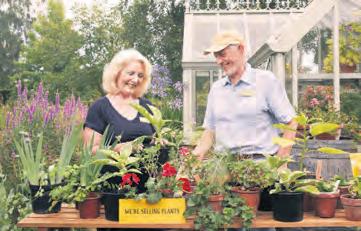
The Picton Garden may only be one and a half acres, but it is bursting with interesting and exciting plants. You can follow the meandering paths that take you through herbaceous borders full of late summer colour, past beds of alien like succulents and into the cooling woodland areas where ferns abound. Home to the National plant collection of michaelmas daisies August, September and October are great times to visit, peak flowering is the last week of September and the first week of October, but masses of blooms can be seen throughout late summer. These special plants are accompanied by an array of colourful friends from crocosmias to heleniums, and much of what you find in the garden can be bought in the adjoining nursery.
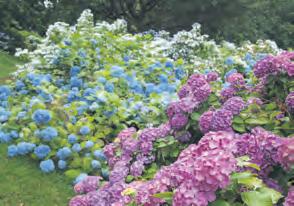
Dramatic blues and purple of the many hydrangeas light up the far side of the garden this month, as the bushes cascade down the hillside and are a real feature of Marwood Hill Gardens this August.
Colour is everywhere.
The herbaceous borders sparkling in the summer sun, with fiery reds of kniphofia and crocosmia mingling with the heady scents of cool white and pale blue phloxs. The emerging dark purple stems of tall Asters and bee covered flowers of Eupatorium create a crescendo of movement and colour.
Around the lakes, late flowering astilbes and purple lythrum continue the colourful spectacle for visitors to enjoy the twenty acres that make up Marwood Hill Gardens.
Marwood’s plant sales area sells many of the plants seen in the gardens, while the Tea Room provides meals, and a welcoming break from a flower filled walk around the gardens.
www.marwoodhillgarden.co.uk Tel: 01271 342 528
Email: info@marwoodhillgarden.co.uk
Marwood Hill Gardens, Nr Guineaford, Barnstaple, North Devon, EX31 4EA
Discover the captivating Kelmscott Manor, the iconic country home of William Morris. Immerse yourself in the charm of his house, gardens, and nearby River Thames. Uncover the remarkable farm barns housing the Tearoom and exquisite shop beyond the formal garden walls. Don’t miss the exclusive summer exhibition, ‘From Behind Closed Doors,’ showcasing rare treasures from the reserve collection. Exhibits include works by Pre-Raphaelite artists Dante Gabriel Rossetti and Edward Burne-Jones, and exquisite embroideries by Jane and May Morris. Throughout the summer come and be inspired to unleash your creativity through the series of free drop-in family workshops led by visiting artists and skilled volunteers. For further information, visit www.kelmscottmanor.org.uk
Kelmscott Manor, Kelmscott, Lechlade GL7 3HJ
Here’s a date for your diary. The final Badminton House Open Garden Day of the year takes place on Sunday,3rd September. This event promises to be a visual delight, showcasing the beauty of Badminton House gardens, designed by Russell Page and Francois Goffinet. Visitors will be treated to an array of vibrant flowers and meticulously manicured lawns. Explore the historic grounds, pick up some horticultural tips and visit one of the many plant and flower stalls. Refreshments will be available to purchase including cream teas inside the Badminton Kitchen or you can bring your own picnic. Open 10am to 4pm.
Book at www.badmintonestate.com
Badminton House, Badminton, South Gloucestershire
GL9 1DD
From stately acres and country cottage gardens to urban gems and allotments the National Garden Scheme provides visitors with unique, affordable access to exceptional gardens and green spaces. Each provide horticultural inspiration, relaxation, and refreshments and raise money for some of the UK’s best-loved nursing and health charities. And, with children under 16 free in most gardens and well-behaved dogs welcomed at many too, the weeks ahead are perfect for exploring a National Garden Scheme garden with family and friends during the school holidays. Find a garden open near you: ngs.org.uk

GARDENS & TEAROOM

Open every Friday 2pm - 5.30pm from 5th May to 29th September
THURSDAY 24 th AUGUST
WEST BAY, BRIDPORT DT6 4EG
Also August Bank Holiday weekend
- Saturday, Sunday & Monday

GARDENS: adult £5, child £1
CADHAY, OTTERY ST. MARY, DEVON, EX11 1QT 01404 813511 www.cadhay.org.uk Member of Historic Houses
ENJOY LAZY DAYS IN HIGH SUMMER AND THEATRE ON THE LAWN

Visit our family home with its beautiful Walled and Woodland gardens, Fernery and Bog garden, walks to the Atlantic Coast, fascinating architecture, collections, displays and film exhibition. Location for Enid Blyton’s ‘Malory Towers’.

* Dogs welcome * Holiday Cottages *

* Homemade light lunches & cream teas *
* Hartland Quay 1 mile *
House, Gardens, Exhibitions etc and Café until 3rd October

Sunday to Thursday 11am - 5pm (House 2pm - 5pm last adm. 4pm)
NB: Main reception rooms only will be closed for filming 12th – 29th June
For more information and theatre events see www.hartlandabbey.com
Hartland, Nr. Bideford EX39 6DT 01237441496/234


Free bus, free car parking + Park & Ride
Admission FREE To Children 16 years & under

For latest info visit www.melplashshow.co.uk




A Fun Day out for all the Family

Buy tickets to Show early and save!
Adult Advance Ticket £18 (on the day £20)
Cadhay’s dahlia collection seems to have survived the harsh frosts over the winter although a few more have been propagated to ensure that it continues to earn its reputation. The dahlias ensure that there is a blaze of colour in the hottest of summers and the magnificent medieval ponds ensure a cool tranquillity. Throughout August the gardens are open every Friday afternoon from 2pm to 5pm and Sunday and Monday afternoon of the Bank Holiday weekend of 27th to 28th August when they will be open in aid of the NGS and Saturday 26th August in aid of Hospiscare. See cadhay.org.uk for further details.
Boscrege Caravan and Touring park in Cornwall is a peaceful and picturesque park, set at the foot of Tregonning Hill, Godolphin National Trust and amongst tranquil Cornish lanes in an area of outstanding natural beauty. The park, open all year, is close to the Cornwall coast and a few minutes’ drive to Praa Sands, one of Britain’s nicest beaches. So, if you are looking to take a luxury holiday (doggie friendly with dog friendly homes and on-site designated fields for the dogs too) in Cornwall in either a self-catering caravan, lodge, touring or even purchasing your very own holiday home then contact Boscrege Caravan and Touring Park.
Boscrege Caravan Park, Boscrege, Ashton, Cornwall TR13 9TG 01736 762231 www.caravanparkcornwall.com

We produce and grow the largest selection available in the UK. Plants are pot grown and suitable for garden, patio or bonsai.



Visitors welcome Mon-Sat 9am-1pm & 2pm-4pm

Barthelemy & Co (DCG), 262 Wimborne Rd West, Stapehill, Wimborne, Dorset BH21 2DZ Tel: 01202 874283

enquiries@barthelemymaples.co.uk

www.barthelemymaples.co.uk
 Cadhay Gardens Cadhay, Ottery Saint Mary EX11 1QT
Cadhay Gardens Cadhay, Ottery Saint Mary EX11 1QT
Barthelemy & Co near Wimborne in Dorset was established by a French nurseryman almost a century ago and the Skinner family now specialise in propagating and growing acer palmatum – or Japanese maples as they’re known.
Throughout spring, summer and autumn the delicate foliage of the acer presents exquisite shadings of Mother Nature’s gold, pink, purple, green, yellow, orange and red. Acers are a delightful addition to anyone’s garden, giving an aura of peace and tranquillity. The ten-acre nursery at Stapehill has a huge collection of Japanese maples to choose from and expert staff are on hand to help select the right variety and to offer advice. Over 100,000 acers are produced at Barthelemy and Co every year approximately 15,000 - 20,000 of them are grafted named palmatum varieties, as one of the largest specialist growers of their kind.
Telephone 01202 874283. www.barthelemymaples.co.uk.
Barthelemy & Co 262 Wimborne Rd W, Wimborne BH21 2DZ


A celebration of countryside, woodland, timber, traditional craft and above all, conservation, the Oak Fair has something for everybody. With over 200 exhibitors showing everything from handcrafted wooden furniture to industrial machinery, the Oak Fair provides a platform for rural crafts and countryside conservation. Demonstrations include the ever-popular chainsaw carving, falconry, heavy horse logging, and the daredevil stunts of the Adams Axemen display. Get involved with hands on activities including tree climbing and archery, and children’s activities including bushcraft skills, face painting, little Landrovers and tractor trailer rides. 26th and 27th August, 10am Stock Gaylard Estate, DT10 2BG
Early bird tickets: £12.50 adults, £2.50 children, £9 concessions. www.theoakfair.com
Stock Gaylard, Sturminster Newton DT10 2BG
The Melplash Agricultural Show brings together town and country to celebrate the best of rural life by the sea! Almost every aspect of rural living is represented, from the finest cattle, sheep, goats and pigs in the area, the newest tractors and farm machinery, to traditional agricultural crafts and the best home-grown produce.
As well being able to see the finest livestock and horses in the area competing for the top prizes, there will be an amazing showcase of local talent in the horticulture, floral arts, homecraft and bees’ competition marquees.
Alongside the competitions and agricultural displays there is a fantastic range of free entertainment around the show field for the family to enjoy including the motorcycle stunt team – Moto Stunts International – who will be performing a fantastic display.
The show will be held on Thursday 24th August.
www.melplashshow.co.uk West Bay Show Grounds, Bridport. DT6 4EG

Whether you’re in the mood for borders brimming with herbaceous perennials or have in mind more minimal schemes of grasses, ferns and shrubs, keep Saturday September 9th (9am to 5pm) and Sunday 10th September (10am to 4pm) free to explore West Kington Nurseries’ Massive Plant Sale. Normally a trade nursery, the seven-acre site will throw its gates open to all, with refreshments to revive the happy, plant hunting hordes. As well as presenting thousands of plants at keen prices, proceeds from catalogue sales will be donated to local charities so just follow the signs to West Kington from the A420.
Tel: 01249 782822 www.wknurseries.co.uk

West Kington, Nr Chippenham, Wiltshire, SN14 7JQ

Badminton House Open Gardens 2023





SUNDAY 3RD
SEPTEMBER 2023 10AM-4PM
Tickets

ADULTS £10 PRE-SALE OR £12.50 ON THE GATE
SENIORS £7.50 PRE-SALE OR £10 ON THE GATE
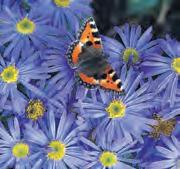
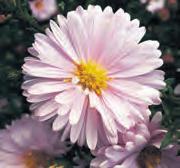
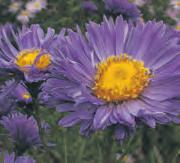
Mail order catalogue available by request
Much awaited outdoor theatre returns to Hartland Abbey this year thanks to The Plough Arts Centre, Torrington. On Tuesday 8th August at 5pm: The Last Baguette – ‘Pandora’s Jar’ (6 years+), Thursday 24th August at 5pm: Heartbreak Productions – ‘Bad Dad’ by David Walliams and Wednesday 30th August at 6.30pm: Illyria – ‘Twelfth Night’ by
William ShakespeareIt is a great way to spend a relaxing evening after a day enjoying the house and gardens and perhaps taking in the beautiful coastal scenery of the Hartland Abbey estate. Younger visitors can enjoy finding where around the house and gardens they saw their heroes in the latest Series 4 of Enid Blyton’s ‘Malory Towers’ released on iPlayer in June. Hartland Abbey IS Malory Towers!
For all information: www.hartlandabbey.com or tel: 01237441496. Hartland Abbey, Hartland, EX396DT
Forde Abbey is in the middle of another busy summer full of events. The popular gardens host an Autumn Plant & Gardening Fair on September 3rd .The Coffee Shop will be open throughout the day serving hot drinks, cakes and light bites from 10.30am until 4.30pm. The Gift Shop, Eeles Pottery will also be open along with the house Plant Nursery from 10.30am to 5.00pm. There’s a reduced entry fee of £5 this includes admission to Forde Abbey’s award-winning 30 acre gardens.
Wednesday to Sunday 11am to 5pm, plus bank holiday Monday. Also open WEDNESDAY 16TH AUGUST for the National Garden Scheme please book at www.ngs.org.uk

OPENING TIMES FOR THE YEAR: 1st Feb - 31st July, Wednesday to Saturday |
Throughout August, Wednesday to Sunday (plus BH Mon) | 1st September - 22nd October, Daily. Open 11am - 5pm (except during Feb/Mar, 11am-4pm)
Tel: 01684 540416 www.autumnasters.co.uk
Old Court Nurseries, Walwyn Road, Colwall WR13 6QE
There is also still time until the end of July to admire the summer of sweet peas with arrays of the popular flowers throughout the gardens and bunches available at the Gift Shop.
Music and theatre also find a place in the summer gardens.
On Friday, 28th July at 7.30pm there’s a Wild arts Opera Evening ,an open air performance with an evening featuring some of the greatest stories of all time, with dramatic intrigue, jealousy, comedy, idealism, and pure love.
August 1st sees a performance of The Merry Wives of Windsor by the Folksy Theatre from 7pm.

The autumn plant fair runs from 10.30am to 4.30pm.
Forde Abbey, Chard, Somerset TA20 4LU
Tea Room & Walled Garden Nursery
WELL BEHAVED DOGS ON LEADS WELCOME

VISIT US: APRIL – OCTOBER


THURSDAYS, FRIDAYS & SATURDAYS 10.30AM – 5PM
Explore William Morris’s “Heaven on Earth” and view the iconic collection of artwork and objects owned and designed by the Father of the Arts & Crafts Movement. Discover why the Cotswold home became an inspiration for him and his family and explore the gardens, enjoy homemade food from our licensed tearoom and visit our gift shop. Take a stroll around the Manor’s enchanting gardens, barns, dovecote, stream and meadow. A variety of activities are available in our Learning Barn for all ages to enjoy including trails, jigsaws, craft making and much more.
For more information and to book tickets visit: www.kelmscottmanor.org.uk



Home to four National Plant Heritage collections, this private valley garden spans over 20-acres and showcases three stunning lakes, rare trees & shrubs, and colourful surprises throughout each season. Not only a haven for wildlife, the garden is also the perfect environment to explore and be inspired. Enjoy a day of inspirational and relaxation for the whole family.
Catch up over coffee and homemade cake or a cream tea in the picturesque Garden Tea Room or take a bit of Marwood magic home with you from our Walled Garden Nursery and Plant Sales.
Enquiries & Tea Room 01271 342528
Plant Sales & Nursery 01271 342577

e info@marwoodhillgarden.co.uk w marwoodhillgarden.co.uk
Marwood Hill Gardens, Marwood, Barnstaple, Devon EX31 4EA
If space is too tight for your gardening ambitions and you’d like to a cultivate little community spirit, then take on an allotment. Anna Channing explains how she went about it and the problems and opportunities she faced when it comes to rules and regulations
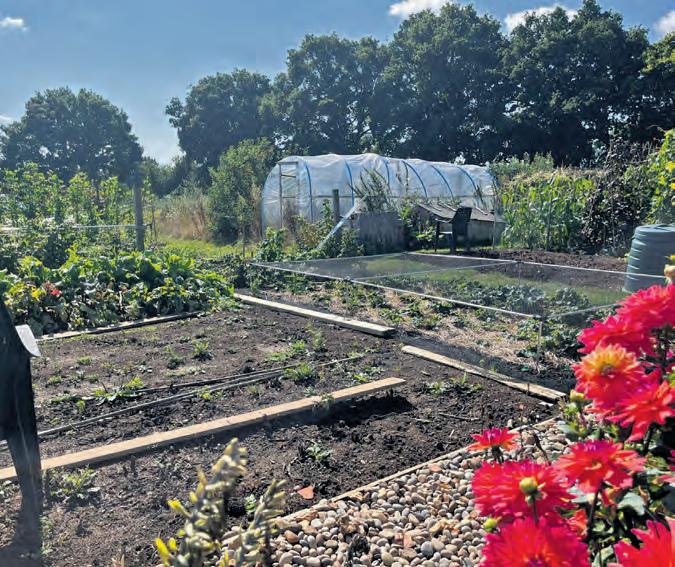
My father had an allotment and loved it. My brother and I spent lots of time with him as he grew his fruit and veg and we loved the fresh air and got to know his fellow allotment holders. They were a wonderfully friendly bunch who became lifelong friends.
So, when I set out to try for an allotment I know something about it, but by no means everything.
There are 300,000 allotments in the UK at the last count and they offer a great route for grow fruit, vegetables and herbs and provide a wonderful outlet if you like me don’t have enough room to fulfil your gardening ambitions. But I remember from my father that there is an etiquette about being an allotment holder.
The set-up of your site will dictate its management. For example, sites can be privately, or council owned and additionally they may be managed by an allotment association. When you take a plot, you get a tenancy agreement which will outline the rules and regulations of your site. Everyone is expected to follow a duty of care when it comes to elements such as safety, leaving a paraffin heater on overnight. Pesticides must be registered and stored safely and an increasing number of sites now stipulate that they only allow organic pest, disease and weed control methods.
Noise making activities are often restricted so check your agreement before you hold that summer party! Access is normally only allowed during daylight hours. Chain sawing during unsociable hours and even strimming can lead to local authority prosecution and housing cockerels on a plot may be restricted.
• If your plot isn’t up to scratch, you will be given official notice to improve it. If you don’t, you’ll lose it.
• Think twice about gleaning edible produce from an abandoned plot - officially you will be trespassing.
• While allotments can’t be used for commercial activity, most authorities allow the sale of genuine surpluses.
• Keep your plot as free from weeds as possible to prevent nuisance seeds from blowing onto neighbouring plots.
• You are of course allowed to grow cut flowers on an allotment but avoid invasive plants such as bamboo and willow.
• Pests that carry health risks like vermin must be controlled by the plot holder.
Make the NAS (www.naslg.org.uk) your first point of contact for queries about allotment management. The website has useful pointers on how to get your own plot, guidelines on adding structures ( polytunnels, cages and greenhouses) and even how you can raise funds for allotment improvements. it may be tempting to put up a shed or greenhouse but your investment can often be destroyed by vandals or thieves. Often it's far better to invest your time and money in caring for your crops instead. a lot of plotholders just bring their tools when they visit, while some sites provide a communal shed for tools. Sometimes the site rules don't allow any buildings so check before you buy one.
As well as the physical know how required to manage an allotment the NAS provides lots of helpful advice on monthly planning , spoil checks, watering guides and more. The website has plenty of downloadable material from composting, bonfires, waste removal and rodent control through to how you can bring more pollinators on to your plot.
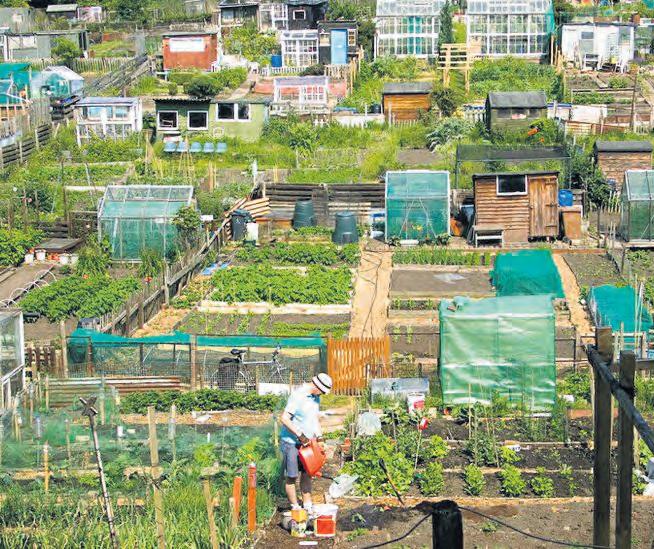
• Finding a vacant allotment plot can be difficult but with patience and persuasion you can often get one even if the list is officially long. Of course, the waiting lists vary enormously depending on where you live. One recent report carried out by the NAS (National Allotment Society) suggested that waiting times varied from two months to two years. Demand peaked three years ago during the Covid restrictions but many councils have been reporting that plots are now easier to get hold of and the huge waiting lists are a thing of the past.
• In this internet age, most people will start their search for an allotment online but that's probably not the best way.
• If you don't know where your local allotment site is, contact your local council which is always the best place to start. If you live in a rural area, contact your parish council.
• In many areas allotments are so popular that you may have to go on a waiting list. Though this is frustrating, it means you should eventually take over a recently worked plot on a well-cared for site.
• If there is a waiting list, have a chat with the site manager or representative. If they know you are keen and will make something of your plot, it’s surprising how quickly a site can become vacant.
• Libraries are also a good source of information. A standard plot is about 250sqm, though many sites now offer half or smaller plots, especially if demand is high. Expect to pay around £30 to £50 a year for a full plot.
You can find allotment sites near you on www.gov.uk


It already feels like a long summer. The real work started in the garden several months ago and most gardeners welcome August with the hope of taking it a bit easier. This is where a few garden accessories come in handy
So, it’s important to get some help. There are so many products lined up now to take off the hard physical work in the garden that most of us would be crazy not to seek help. And then there’s the opportunity of when shopping around to treat ourselves to a little luxury so when it comes to gardening it is not all hard work and no pleasure.
At Country Gardener we are always on the loot out for great products and fresh ideas so here’s a few to help take the strain.

Made from a blend of dried herbs, ‘QR’ speeds up the decomposition of organic matter. There is no turning required and compost can be made in as little as four weeks. It is suitable for use with garden or kitchen waste in all types of compost bins.
‘QR’ is easy to use – simply add water to the powder and apply to the layers of the heap during its construction.


Available from Exedra Nursery, Stroud Tel: 07487 537026 and online at Gardener’s Cottage Plants www.gcplants.co.uk or Tel: 01830 806813
Stay protected this summer with great 25 per-cent off deal from Eden
Every Eden Awning is bespoke manufactured from high quality aluminium with a choice of over 150 Teflon finished fabrics which are water and dirt repellent. With accessories such as intelligent heating and lighting you can spend more time ‘outdoors’ in comfort.
An Eden Awning is a stunning addition to any home.

To benefit from these offers visit edenverandas.co.uk or call 0800 107 2727 and use code CGA290722



Now the growing season is in full swing it’s very difficult to keep up with fast growing shrubs and climbers which need to be kept under control. One great idea is using Rivelin Glen Products which are well designed wire anchors. They are quick and easy to attach to concrete posts (without drilling) to act as an ‘eye’ by threading wire through them to create a trellis system. The Gripple Trellising System is ideal to use with these Wire Anchors as the wire does not stretch, takes up to 100kg load and has a life span of 15 years. You can achieve multiple rows with one length of wire and two tensioners so it’s no more sore hands or sagging wires. Rivelin Glen Products are the main stockists of the Gripple Trellising System. Wire Anchors cost from £10 for a pack of three. Gripple starter pack £19.75p
GORGEOUS NINE SEATER CORNER SOFA – 70 PER-CENT OFF

Want
We
Country Gardener 28





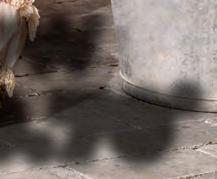

























George Cannon is a nature lover who has spent 20 years appreciating wildlife in and around his Dorset home and garden. He takes time out to defend the much-aligned bramble and explains what a key role it plays.
First the bad news.
Brambles can quickly spread creating dense stands which outcompete other species. The plant can spread by seed but also via stems which take root when the tip of the stem reaches the ground, producing new aerial shoots.
Brambles can be invasive and are difficult to totally eradicate.

But think on this -when allowed to thrive it forms dense patches and, being semievergreen, it provides food and shelter for virtually every hedgerow inhabitant. When growing on a bank, rabbits will conceal their burrow entrance deep in its entanglement.
Their sworn enemy, the fox, feels safer with its den beneath the shade of the bramble. In tall grass, a knot of briar will see the bank vole and wood mouse prosper, hidden from the sharp eye of a kestrel, but of course weasels and stoats can fold their elongated bodies through its labyrinth in pursuit of rodent prey.
The harvest mouse, banished from wheat fields by modern farming, weaves its tennis ball size nest deep within its bristles.
The wren, the whitethroat and the blackcap, along with a dozen other species of bird, will build nests among its dense thorny embrace; finding both protection and a ready supply of insects close by. For many insects brambles are irresistible, and without them some cannot survive.
Several types of moth rely on bramble leaves for their caterpillars - the emperor moth, peach blossom moth and garden tiger being the most notable - with the grizzled skipper butterfly also favouring bramble leaves for egg laying. If you look closely at the leaves, they are often nibbled or stained or have the tell-tale sign of a leaf miners’ tunnels scrawling across them, for the bramble has to survive constant insect attacks. Despite this, it will still provide nectar-rich, pinky-white flowers throughout the summer, which are a draw to bees, butterflies and numerous other insects. On a sunny summer’s day, an hour spent staring at a flowery bramble patch is an entomologist’s dream.
We too have relied on brambles throughout the centuries. It was used as a barrier and fencing in the way that we use barbed wire now. The leaves were recommended as aids for various ailments and conditions, from inducing child birth to curing arthritis, and in medieval times brambles were encouraged to grow over new graves, either to keep evil spirits out or, more probably, the dead in. But of course, the bramble is also the provider of blackberries and there is barely a creature in the countryside that doesn’t savour the succulent clusters of its fruity drupelets.
So as the berries ripen, say, like generations before us, a little thank you as you pick them for your pie. But beware, folklore decrees that one never picks blackberries after Michaelmas day, for the devil will spit upon them. This does make some sense, as the sweet, juicy berries of late summer can turn decidedly bitter by early autumn.
Although, on a serious note, do be mindful of your local wildlife and take the minimum you need, as a great many creatures rely on this ‘crop from the briar’.
Just
The subscription costs just £20 and guarantees a 10 times a year magazine packed with information , gardening advice, local events.

You can select from one of our five editions of the magazine which is relevant to where you live.
Just fill in the form below and include your cheque for £20.
I would like to subscribe to Country Gardener for the next ten issues for £20:
This is a subscription just for me *
This is a gift (send next available issue) *

Please choose your region by ticking the box:
Cotswolds * Devon * Dorset * Somerset * Hampshire *
Your details:
Title Forename Surname
Address Postcode Tel No
Details of gift recipient:
Title Forename Surname Address Postcode Tel No
Complete this form and include a cheque for £20 made out to Alro Publishing Ltd and send to: Magazine Subscriptions, Country Gardener, Mount House, Halse, Taunton, Somerset TA4 3AD.
Remember to tell us which one of the five editions you would like to receive.
We grow far more herbs in our gardens than vegetables. Happiest left to their own devices there is a lot more we could and should be growing to add colour and scent to the garden and add flavour to our cooking
Those who cook regularly will always have some fresh herbs growing somewhere near the kitchen.
While growing vegetables has become a passion with many gardeners far more of us grow herbs than vegetables. The good news is that for the most herbs do not really need the day-to-day attention which many vegetables call out for. Many of them are happiest left to their own devices which makes growing as wide a variety of them as possible both rewarding and helpful in the kitchen.
Although high summer is upon us, there is still time to add some herbs to your summer garden. The benefits of herbs are many. They attract beneficial insects and pollinators to your garden while adding flowers and fragrance. Herbs add flavour to meats and sauces and to vegetable dishes and salads prepared from your garden. Certain herbs are
better adapted to grow during the heat of summer than others. Some of the best herbs to grow for summer are basil, dill, parsley, sage and rosemary. They can be sown as seeds or purchased as potted plants and grown in beds or containers.
The fact is herbs are vital. A small selection of fresh herbs is essential for any kind of cooking and a small selection can be grown successfully in almost any situation, from a window box or pots at the back door to a full on herb garden.

Herbs are best harvested in the morning after the dew has evaporated, but before the heat of the day. Herbs for culinary use should be harvested before they flower. Essential oil levels and flavour are generally highest once flower buds have appeared, but flowers are not yet open.
Basil is an annual that comes in a range of colours and flavours with ruffled leaves or flat, fine-textured or larger leafed. The purple leaved varieties add interest to the garden border or containers. In addition to the traditional Italian basil flavour, there is lemon basil, lime basil, cinnamon basil and Thai basil, which has a spicy, aniseclove flavour. Depending on the variety chosen, most basil seed germinates in five to ten days and is ready to harvest in 60 to 80 days. Basil is quite sensitive to cold and frost.
Dill is a common ingredient used when making pickles. Dill seed germinates in about 10-14 days. It does not transplant well, so it is best to sow the seed where you want it to grow. Dill will grow in most soils, but prefers a sunny spot in well- drained fertile soil.
Parsley is a biennial – it flowers and sets seed the second
• Don’t try and grow basil out of doors. The chances are it won’t be a success. Basil is the one herb which needs real heat, moisture and good soil. These are conditions which only a cold frame, polytunnel or greenhouse can guarantee.
• If you are looking to grow herbs in the shade, two of the varieties which won’t mind it are coriander and sorrel. Sorrel is perhaps somewhere between a vegetable and a herb but will thrive out of the sun as long as it is not too dry.
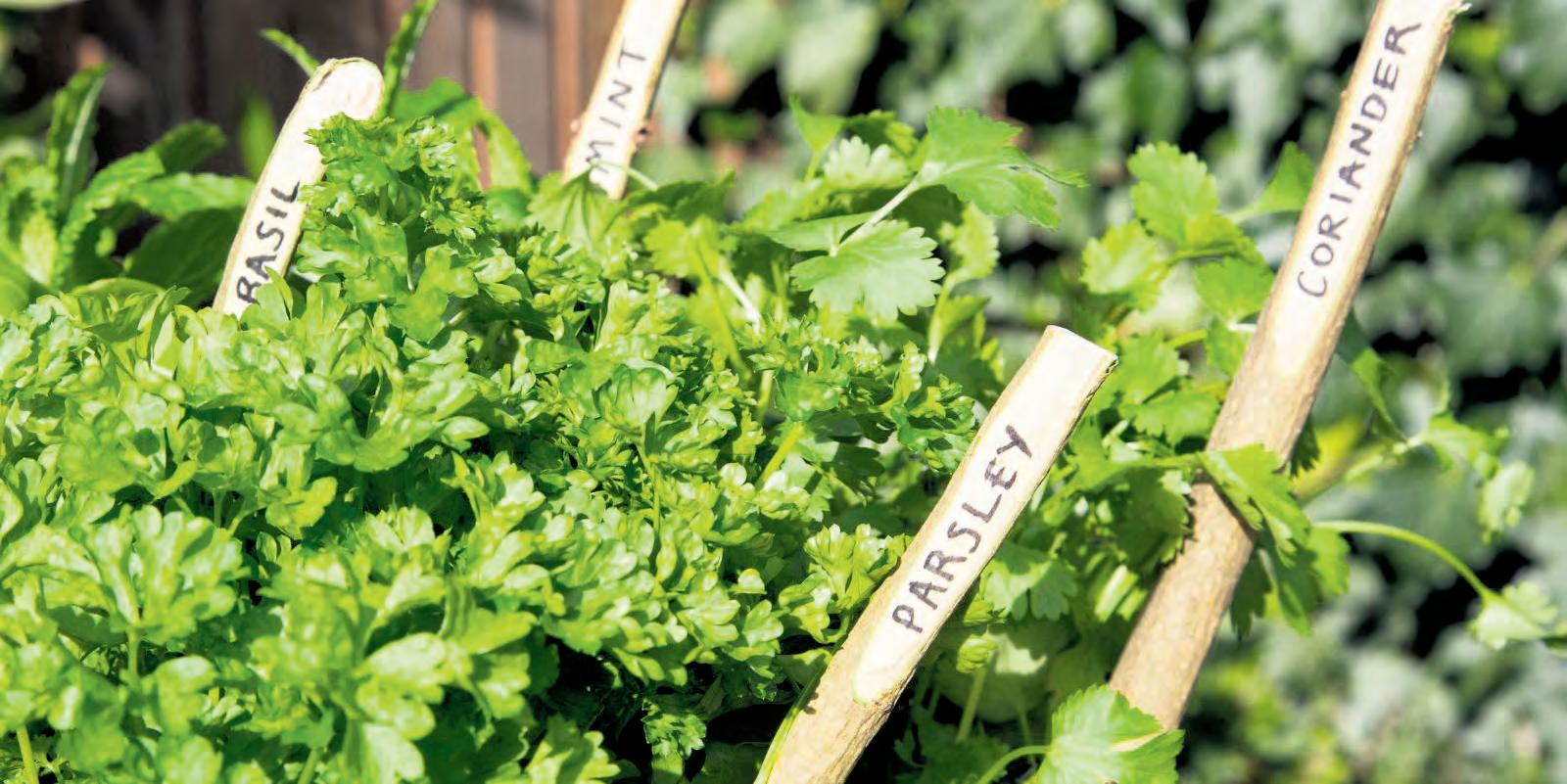
• If you are growing parsley then be generous when it comes to the amount you grow. It’s a herb which can be used a lot and you will never have enough. You can with a little planning grow it almost throughout the year.
• If you are looking for longevity in herbs then there’s only one choice-rosemary. Given good drainage and a warm spot they can become large spawling bushes or remain neat shrubs.the plant will last for up to 30 years.
• Wet conditions kill more herbs in winter than the cold, so place container-grown perennials such as oregano, thyme, sage and rosemary in a sheltered position against a wall or the side of the house to give them a chance of making it through the winter.

• When planning your herb garden, spare a thought for bees and other pollinators who love these aromatic plants even more than we do. Fill your borders with flowering herbs, such as lavender, borage, rosemary, thyme and mint.
• Companion planting has been practised for thousands of years and is a way of growing certain 'partner' plants side by side for beneficial effects. Many herbs – such as thyme, lavender, rosemary, oregano and mint – are natural pest repellents, and can help to deter insects that would otherwise seek to feast on your vegetable garden.
• There is something magical about smelling liquorice in a herb garden - which is exactly what you'll smell if you grow fennel. Historically, fennel was thought to produce bravery and courage in men, so was often chewed by soldiers before going into battle. But you can harvest the seeds and leaves for everyday meals.
year. It is grown for its foliage. There are two common types: flat leaf and curly. Curly parsley may be more decorative as a garnish and accent in pots and garden borders, but flat leaf parsley has superior flavour – both have their uses. Parsley seed has a reputation for being difficult to germinate, taking 14-30 days to germinate and 75 days to harvest.
Sage is a shrubby perennial plant. It can be a beautiful addition to a garden or landscape. Besides the usual greyish-green leaves of garden sage, there is golden sage, which has light green leaves edged with bright yellowgold. Purple sage has dark reddish-purple leaves. The leaves of tricolour sage are mottled with shades of green, white, cream, pink and purple. Sage leaves are used fresh or dried for sauces, dressings, sausages, tea, and for dried swags and wreaths. Sage seed germinates in seven to 21 days.
Rosemary - is a small, perennial evergreen shrub that can be difficult to grow from seed. It is most grown in containers from started plants. Rosemary is native to the Mediterranean. It grows best in full sun and well-drained soils. Pots can be taken indoors before frost and grown in a sunny window for use over winter.
The classic Italian pesto alla Genovese is made with basil and pine nuts. But the idea can be adapted to other herbs such as the combination of basil and parsley, although you can use parsley alone. You can also use mint in a pesto, or stronger herbs, such as sage or thyme.

• 50g pine nuts, lightly toasted
• 30g bunch of basil, leaves only
• 30g bunch of flat-leaf parsley, leaves only
• 1 garlic clove, peeled and chopped
• 35g Parmesan, finely grated
• Finely grated zest of half a lemon
• 100-150ml extra virgin olive oil
• A good squeeze of lemon juice
• Sea salt and freshly ground black pepper
Toast the pine nuts: put them in a dry frying pan and toast over a medium heat for a few minutes, tossing frequently, until golden brown.
Remove them from the pan immediately, so they don't burn, and leave to cool.
Put the toasted nuts into a food processor, along with the basil, parsley, garlic, Parmesan and lemon zest. Blitz to a paste. Then slowly pour in the extra virgin olive oil until you have a thick purée.
Season with salt and pepper and add a good squeeze of lemon juice to taste. This pesto will keep in a jar in the fridge for a few days.
Mint - comes in many varieties, but when it comes to your kitchen staple, spearmint is a top-notch option. The diverse herb can be used in everything from tabbouleh to fruit salads.
Spearmint is also a wonderful way to add flavour to water. If you have trouble getting your eight cups of H20, pluck off a few seeds of your spearmint plant and add to cold water. Keep in the fridge for a cool and refreshing pick-meup when you’re feeling that summertime dehydration.
Bay - Bay leaves are a staple in Mediterranean and French kitchens, and can add a luxurious depth to summer soups and stews. You can also soak them in water and thread them through pieces of meat for herbal and flavourful kebabs.
The leaves best thrive in warm climates, such as a sunny deck or windowsill. Come the cooler months, consider bringing your bay plant inside so that it can continue to thrive. The leaves are sharp, so be sure to remove them before serving.
Chives - Despite their versatility, chives rarely get the attention they deserve. Their mild onion flavour makes them a great option for dozens of your summertime recipes. They also add that “something special” to a mashed potato recipe, and can help heighten the flavour of creamy dips and egg salads.
Tarragon - These anise-flavoured leaves age quickly, making them an ideal choice to keep fresh and around the house.Its strong flavour makes it an ideal pairing for mellow and comforting dishes, such as potato salads or butter sauces.
Thyme - is comforting and subtle, with a lingering flavour that adds depth to your favourite summertime recipes. Its versatility makes it ideal for a variety of savoury dishes, and it works well paired with other French and Mediterranean herbs.
Try with your favourite grilled, roasted, or sautéed veggies, such as summer squash, carrots, or courgettes. Ratatouille, an Italian staple comprised of onions, aubergine, peppers, courgettes, and tomatoes, is a perfect platform for thyme.
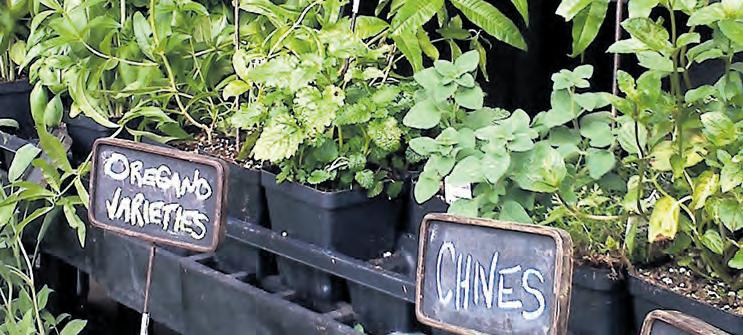
A true sun lover, best grown in rich moist soil in a warm sunny spot. Pick off the tops of shoots to keep the plants bushy.
Thyme
Thyme loves poor spoil and plenty of sun. Grow from seed and pick sprigs throughout the summer.

Rosemary plants will go on for years if you give it plenty of sunshine and good drainage. Taking cuttings in summer is important.
The best thing about mint these days is the exciting flavours you can grow
including chocolate or pineapple. The thing to watch is its ability to spread, so keep it contained. You can pick mint through to November.
Parsley is a biennial so make sure you have plenty of succession planting. It copes well in the shade and its one herb which you need to grow plenty of.
Perhaps the most decorative of herbs and worth growing in the vegetable bed just for its flowers. Doesn’t mind being out of the sun and you should sow seeds in the spring and then divide in the autumn for lots of plants the following year.
Cathy Foreman started gardening during Covid and went on to take an RHS qualification course which she now believes will lead to a very different future
I hope my experience might encourage others who have an interest in gardening to consider making a career move. I have always been keen on gardening, but the Covid lockdown really got me out of doors and passionate about it in a way I didn’t think possible.
I also found I had some genuine successes out there which maybe led me to thinking I did have green fingers!
So, I signed up for the RHS Level 2 qualifications. I was spending a lot of time reading about gardening and what techniques I needed to learn.
It had been a long time since I had been in any classroom environment or even in a room full of strangers but the thing about the RHS courses is there is a common passion to be shared about gardening and so there are no barriers to break down and it was easy to make friends and relax into the course.
My garden had been badly neglected before Covid.
I have a half an acre plot with borders but I also enjoy growing as much fruit as possible.
Studying has been wonderfully useful, and I now understand much more about my options for cultivation, feeding and managing the soil.
I don’t think for example I fully appreciated the importance of organic matter and good mulching before I saw the impact on the practical courses and seeing what is possible has made a huge difference to watering during any hot periods.
So, what else did I learn?
• Correct identification of plants and how this influences cultivation and selection
• Prevention of pests and diseases and maintenance of strong, healthy plants
• Creation of habitats to encourage wildlife
• Increasing plant collections economically by learning propagation techniques
The course had a theme about helping wildlife running through it. Planting a mixture of native and exotic plants helps slow and reverse the decline in bees, butterflies, moths, hoverflies and other insects.
I think also I understand more about lower maintenance alternatives but most of all I think the course has given me the confidence to go about gardening my way knowing that I have now good practical knowledge.
The course I opted for was part time so I could fit it in with work and other commitments. Learning alongside others was very important especially when it came to bits and pieces of practical hands-on stuff which the course offers. So, what difference has this course made and what is next for me?
I have for the past few years been working for a Devon charity. The work is rewarding and I like it but I am afraid the gardening bug has well and truly bitten me and I would like to see if it offers a career opportunity.

I am now working hard to see what there is out there. Just this week I have applied for three gardening jobs working in Devon gardens as an assistant. The RHS qualification was important I have to say in getting an interview. So who knows but if my experience is anything to go by there must be lots more like me for whom gardening spells out a new life.
With their dainty two-tone pendent flowers that last well into autumn, hardy fuchsias bring a tropical touch to borders and containers in warm sheltered spots, in sun or partial shade.
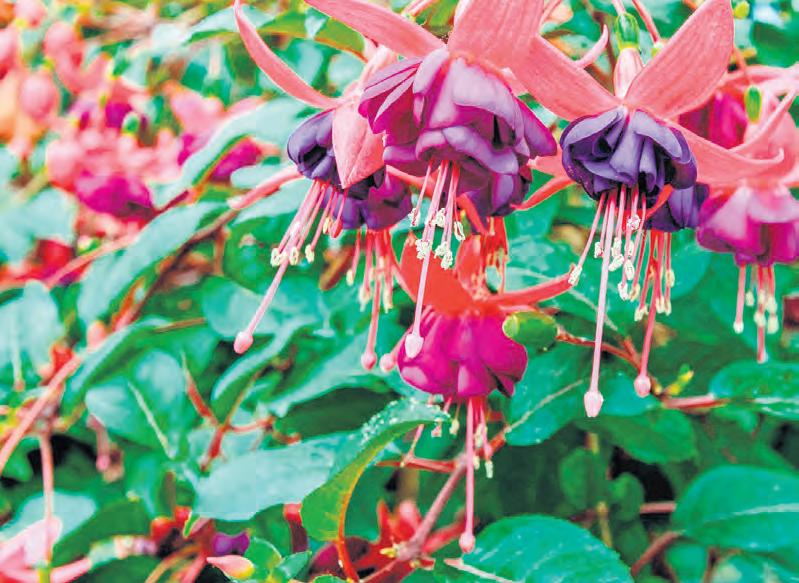
Hardy fuchsias seem to cause problems for many gardeners . They needn’t and keeping them going year after year is easier when you understand they can survive outside without the need for cossetting over winter indoors. These fuchsias tend to have an upright habit with the stems arching towards the tips, under the weight of the flowers. The flowers dangle in pairs along the stems towards the tips. Colours include pale pinkish-white, and all shades of pink, red and violet-purple. Some have golden, variegated or slightly darker green leaves, adding to the contrast with the flowers.
Fuchsias grow happily in any garden with moist-but-well-drained soil, sun or light shade, and shelter from cold winds. Compact and bushy, they can even be grown as informal hedges.
What is the difference between fuchsia and hardy fuchsia?
Tender fuchsias typically have trailing stems, while hardy fuchsia has woodier stems and a shrub-like growth habit. They have a very different look.
Do hardy fuchsias need winter protection?
Whether your hardy fuchsia winters in a container or outdoors, it is also essential to protect it from the cold. For this purpose, use insulating material such as leaves, brushwood and straw. In addition, it has proved useful to mound the plants with soil in the autumn.

How do you know if you have a hardy fuchsia?
Hopefully, a plant’s label when it was purchased will inform whether a fuchsia is hardy or tender. If a label is not to hand then a hardy fuchsia can usually be distinguished by being larger, more upright and shrub-like than tender varieties and with stems thicker than one to two centimetres.
Do fuchsias grow back every year?
Most fuchsias are tender perennials, which means that they’re perennials in warm climates, and so come back year after year if you live in a warmer location.
How do you prune fuchsias in the winter?

Fuchsia plants that need to be overwintered undercover should be lifted by the end of September before the first frost, potted up, and cut back by about half. Remove as many of the leaves as possible. When spring arrives, prune out all the weak growth and cut back all the stems to the lowest pair of good buds and they will race away with new growth.
What is the lifespan of a fuchsia?
They are with us long term! A fuchsia will live around 30 years if cared for and kept away from the problems of winter.
Where is the best place to plant fuchsia?
Fuchsias are wonderfully versatile and will happily grow in sun or partial shade in any fertile, moist, well-drained soil. However, they do appreciate some shade during the hottest part of the day and a bit of shelter from cold winds.
What is the best fuchsia to grow as a standard?
The first decision is the variety of fuchsia to choose. For a small standard you want an upright bush type which produces single flowers which are not too large. There are four varieties to recommend , ‘Checkerboard’, ‘Celia Smedley’, ‘Heidi Ann’ and ‘Pink Fantasia’.
Cats have several ways of being a nuisance in the garden but there are plants and products which can provide a complete answer to any feline problems they cause
Are you tired of having your garden bed dug up by cats? Or are you simply looking for a natural cat deterrent to protect your garden from feline visitors?
Cats can be a significant nuisance in the garden, causing damage to plants and leaving unsightly messes behind. Fortunately, there are plants to deter cats from your garden beds. While cats can be lovely pets, their instincts and behaviours can make them challenging for gardeners.
Unfortunately, cats can have several adverse effects on a garden, leading many gardeners to consider them pests.
One of the main reasons for this is that cats use garden beds or patches of soil as litter boxes. This can be frustrating for gardeners who have put a lot of time and effort into cultivating their plants, as cat faeces can harm plants and introduce diseases into the soil.
There is a god side however. Besides their companionship and charm, cats are helpful to the flower garden in that they keep pests like rabbits, voles, and moles away.
LAVENDER - its fresh smell that will help drive cats away. Cats have a powerful sense of smell, and anything that emits a powerful scent will put them off approaching your garden. Lavender is also an excellent fly-repellent plant, as the strong-smelling oils this plant emits puts these pests off too. ROSEMARY is another of the smells that cats hate. Another bonus is that rosemary is evergreen, one of the best plants to deter cats year-round.

COMMON RUE keeps cats away because of the offensive scent they smell from it. Fortunately, the pungent smell isn’t as foul to humans, and the plant’s blue foliage is attractive. However, rue leaves are toxic to cats and humans if consumed in large doses. So, although rue is up there with plants that cats hate, you should consider the location when planting rue.
MINT is one of the most common smells that cats hate, and pennyroyal will provide you with a lovely scent that will do the job. Pennyroyal releases a strong spearmint smell that will draw you in and kick cats out.
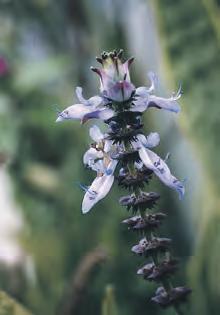
SCAREDY CAT PLANT -experts in Germany developed the aptly named plant specifically to repel pests in the garden. Whenever any animal brushes past this plant, it releases a horrible odour that will deter cats, dogs, foxes, rabbits –almost any garden pest. However, its pungent smell can be unpleasant for humans, too, so be careful where you plant.
CATNIP is one of the classic plants that deter cats, but not because they hate it. In fact, cats love catnip, which is why it can be so effective if you plant smartly. By planting catnip in spots far away from your flower beds or in more unsightly places in your garden, cats will make a beeline for it.
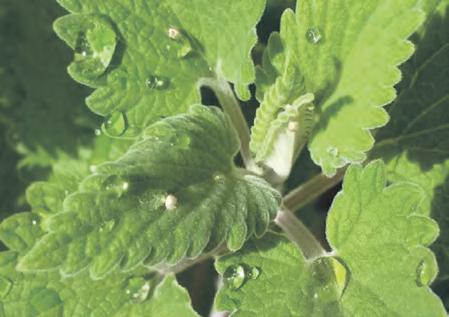
Some indoor plants which may look ordinary are in fact poisonous to cats. The list is quite a long one, however if you suspect that your cat has eaten part of a poisonous plant then you should always take it to the vet.

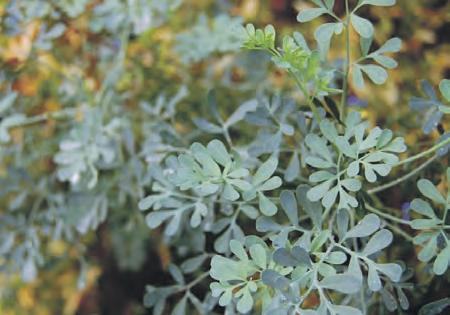
Cut flowers can be an issue as they have parts which are toxic to cats: chrysanthemums, helleborus, peony, allium, eucalyptus, hydrangeas, oleander, cyclamen are all of concern. Special mention should be made of any sort of lilies as they are dangerous to both cats, and dogs for that matter. When it comes to potted plants the list is a long one and includes amaryllis,Swiss cheese plant, caladium, lantana, croton hyacinth and asparagus fern.
Cats do love to chew on plants. The reason why they need grass in their diet is not always clear but part of it is a self-cure when they have any digestion problems. It might also be to add roughage or deal with fur balls. If a cat is housebound, it’s an idea to have a seed tray converted into a mini lawn.
Cat grass which is grown indoors specifically for household pets is available from some pet stores. Cat grass is usually a mix of seeds including wheat, barley, oats or rye.
There is a wide range of natural pest repellent products that can be used to safely get rid of unwanted cats (and dogs). These work by releasing a strong odour that stops an animal in its tracks. Alternatively, because cats really don’t like citrusy smells, you could scatter grapefruit, lime, orange or lemon rinds on your lawn and in the flower beds.
According to the RSPCA, by law, cats are protected, which means they can roam freely. It is essential that any deterrents you use to get rid of another cat do not cause it injury, harm or stress in any way.
a
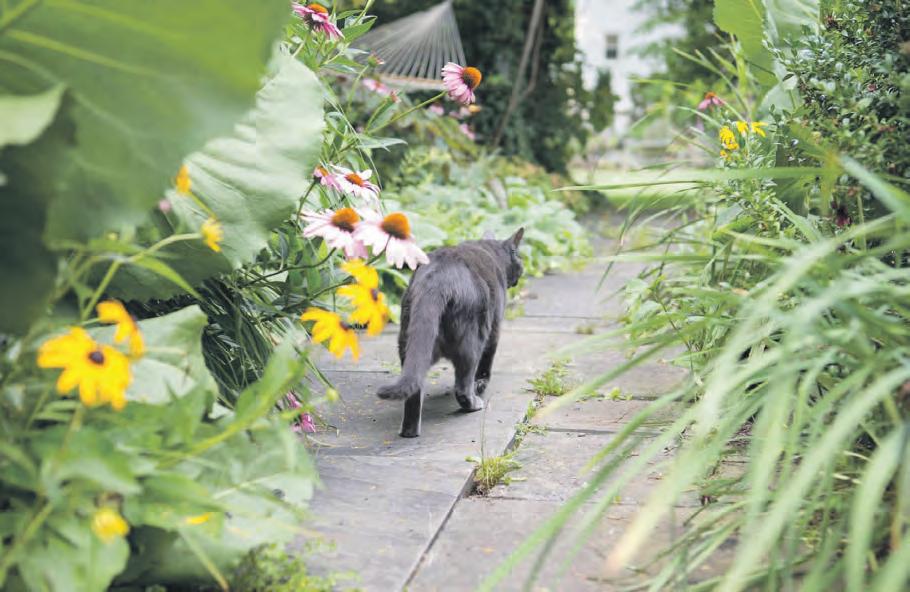
• Make sure you pick up any animal poo you find in your garden every day.
• Place a squirrel baffle on a bird feeder post
• Don’t offer cats food, as they’re more likely to return.
• Plant shrubs closely, grow prickly plants or use small pebbles or chippings to make it difficult for cats to dig.
• Keep flowerbeds watered, as often cats don’t like wet earth.
• Install an automatic spray that detects movement.
• Ask the owner if the cat is neutered and ask them to ensure there’s a suitable toilet area in their own garden.
Catnip Common rue Scaredy cat plant LavenderACCOMMODATION
Secluded cosy cabins & lodges in wooded valley running down to Wembury Bay & SW Coastal Path

Plymouth, Dartmoor & lovely South Devon Villages & Towns in easy reach. Pets Welcome. Forest School. Tel: 01752 862382 www.churchwoodvalley.com

Penrice Castle Gower
16 holiday cottages on an 18th century Estate on the Gower Peninsula with beautiful Grade I listed historic park and gardens.
Tel: 01792 391212 www.penricecastle.co.uk
Wales
Seafront chalet situated on estuary.
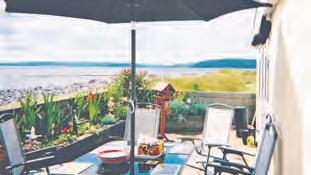
Sleeps up to 6. Seaview. Well Behaved Dogs Welcome Free of Charge. Free WIFI. Open from 1st March - 31st Dec. For Brochure
Tel: 01269 862191
GLORIOUS NORTH DEVON. Only 9 cosy caravans on peaceful farm. Wonderful walks in woods & meadows. Easy reach sea, moors & lovely days out. £125-395pw. Discount couples. Nice pets welcome. 01769 540366 www.snapdown.co.uk
BOSWORLAS NEAR SENNEN/ST
JUST, CORNWALL. Cosy Cottage, rural views, Sleeps 2-4 01736 788709 www.bosworlas.co.uk

ACCOMMODATION HOLIDAY COTTAGES

WYE VALLEY/FOREST OF DEAN. Fully equipped single-storey cottage with two en-suite bedrooms. Wi-fi.Recently awarded Visit England 4-star GOLD. Rural retreat, shops/pubs one mile. Enquiries welcome. Tel: 01594 833259 www.cowshedcottage.co.uk
ACCOMMODATION WITH BEAUTIFUL GARDENS
NORTH DEVON NEAR CLOVELLY. 3
delightful cottages situated in 12 acres of idyllic countryside. Sleeps 2-4. 1 Wheelchair friendly. Brochure: 01237 431324 www.foxwoodlodge.co.uk foxwoodlodge@outlook.com
Lovely self-catering cottage in peaceful location: large garden. Sleeps 2. Perfect for famous gardens, NT properties & Cotswolds.
Tel: 01789 740360 www.romanacres.com
CARDS, PRINTS & GIFTS
A range of over 200 greetings cards and prints from the flower paintings of ANNE COTTERILL

We sell to both individuals and trade. No order too small. Contact us for your free catalogue.
Mill House Fine Art Publishing, Bellflower Gallery, Market Place, Colyton, Devon EX24 6JS Tel. 01297 553100 info@millhousefineart.com www.millhousefineart.com
ECOLOGICAL LANDSCAPING CONSULTANCY & DESIGN


GARDEN PLANTS/ACCESSORIES
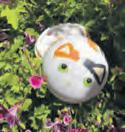
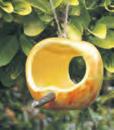

Welcome to Redcroft Hampshire Country House Fabulous Gardens Comfortable Bedrooms 5 Mins walk from Hamble River Within 15 mins Southampton & Portsmouth Call 07768997979
Gloucestershire Quality Bungalow B&B
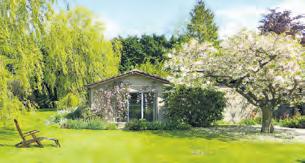
Ensuites, rural, large garden, paddocks, sheep and fruit. Ideal Cotswolds, Malvern’s, Forest of Dean, cycle storage, ample parking, Wi-Fi £40 p.p.p.n.
GARDEN BUILDINGS

GARDEN SERVICES
POLYTUNNELS

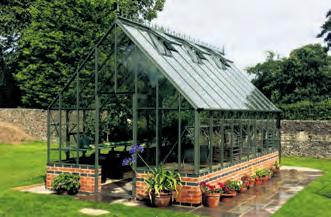 BED & BREAKFAST
BED & BREAKFAST

Our popular gardening themed crossword is compiled by Saranda which over the past year has become enormously popular with readers. The winning entry to be drawn by us will receive £100 of RHS gift tokens. Completed entries should be sent to Mount House, Halse, Taunton, Somerset TA4 3AD. Closing date is Friday 25th August. The winner of our July issue crossword was Amanda Glass from Salisbury.
ACROSS
1. Common piece of laboratory glassware (4,4)

5. Thorny shrub that grows in Australia, sometimes called wattle (6)
9. A gardener’s friend who eats insect larvae (4)
13. Solid globe of glass used by fortune-tellers (7,4)
14. Common name for any plant of the Cryptanthus genus (5,4)
15. Biblical character who built something from gopher wood (4)
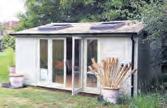
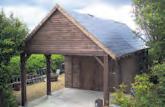
16. Fast-growing plant now regarded as an aggressive weed (8,8)
18. A four-petalled flower or leaf of four leaflets (13)
19. Large cushion filled with polystyrene beads (7)
20. Name of Roosevelt’s wife (7)
21. Familiar name of Linaria vulgaris, the yellow toadflax (6,3,4)
23. Beast from Greek mythology and father of the Minotaur (6,4)
25. Stallions kept for breeding (4,6)
28. Eranthis hyemalis, a flowering plant in the buttercup family (6,7)
30. Agricultural or garden workers who remove unwanted growth (7)
32. Racecourse where Grand National winners include Silver Birch and Hedgehunter (7)

34. Australasian member of the Solanum genus also called poroporo (8,5)
36. A famous florist’s slogan (3,2,4,7)
37. Staffordshire market town and popular vegetable (4)
39. Things understood by or meant for a select few (9)
40. The opposite of subterranean (5,6)
41. To remain in the same place (4)
42. Collect plants or fruit for food (6)
43. Welsh village where a famous terrier was first bred (8)

DOWN
1. Skill or ability in a particular field (9)
2. Small family of plants belonging to the order Ericales (11)
3. Name of the buckwheat tree, Cliftonia monophylla (4)
4. North American tree Abies balsamia (6,3)
6. Botanically, having the form of a shoe or slipper (10)
7. Alcoholic drink with a strong mint flavour (5,2,6)
8. Name of several plants whose name is derived from a biblical quotation from Psalms 133 (6,5)
9. Holy person or sage (7)
10. A person who carelessly drops rubbish in public places (9)

11. Calophyllum inophyllum, a Pacific tree that yields resin and oil (6)
12. Simplifies information so as to make it easier to absorb (10)

17. Leafy foliage (8)
21. Common name of tropical tree, Annona reticulata (8,5)
22. Genuses of plants commonly known as sundews (8)

23. Hedgerow plant of the genus Anthriscus, also called wild chervil (3,7)
24. Bonded material that helps slow down a vehicle (5,6)

26. Name commonly given to the shrub Spiraea tomentosa (11)
27. Easter delicacy that includes dried fruits and spices (6,4)
29. A mate for Billy? (5,4)
30. Overseer of a forest (9)
31. Domain ruled by an Arabic ruler (9)
33. Place where rodents are housed (7)
35. Dazed or in a faint (6)
38. Fleshy covering of some seeds (4)
Mark Hinsley reports on the story of an ancient yet also relatively new tree. Fossil records date back to the Mesozoic era and it was thought to be extinct until a small group were discovered by the Yangtze river, China
In 1941 Dr Shigeru Miki from the University of Kyoto, whilst studying fossil samples of the family Cupressaceae (which is the cypress family), realised he was not, as had long been thought, looking at fossils of either Sequoia (redwood) or Taxodium (swamp cypress) but had happened upon a previously unknown genus which he called Metasequoia (meaning it looks like Sequoia).
Due to the state of war that existed between Japan and China at the time when, in the same year, Kan Duo, Professor of Forest Management in Chongqing, observed an enormous living specimen while performing a survey in Sichuan and Hubei provinces, he was unaware of the work of Dr Miki, but he recognised the tree was something different.
Whilst he did collect some specimens, he did not publish his work.
In 1943 Wang Zhan of the National Bureau of Forest Research, Chongqing, collected samples from what is thought to be the same tree, which were again identified as a tree unknown to science.
World War II postponed any further research, and it was in 1946 that Professors Zheng Wanjun and Hu Xiansu made the link between Miki’s fossils and the living tree.
It was they that gave the Metasequoia its species name of glyptostroboides because of its resemblance to the Chinese swamp cypress. Since its discovery, seed has been distributed for growth trials at collections across Europe and North America. Its ability to also be grown from cuttings means that it has also become widespread throughout Britain and is now a popular favourite. It is however, still classified as an endangered species.
OK team, anoraks on and buckle up...
Miki was looking at fossils, whilst the Chinese group had the living tree. The similarity to the foliage of Sequoia sempervirons (coast redwood) would have been striking to
Time Off Kate Lewis timeoff@countrygardener.co.uk
Miki, who would lack one vital piece of information which the Chinese group had, that being that the tree was deciduous. Swamp cypresses, both the Chinese one and the one more familiar to us Taxodium disticum (North American swamp cypress), are also deciduous.

So, the tree ends up being named after an evergreen conifer and a deciduous one.
At first glance Metasequoia glyptostroboides and Taxodium disticum are very similar trees. However, a close inspection will reveal that the needles on a Metasequoia glyptostroboides are arranged opposite each other on the twig, whilst the needles of Taxodium disticum are arranged alternately. In July 1947, the Arnold Arboretum in Boston funded an expedition to collect seeds for the arboretum from the Metasequoia originally found by Kan Duo and further trees found in a nearby valley.

Several kilos of seed were distributed over the next few months for growth trials to Chinese institutions, the Arnold Arboretum, Missouri Botanic Garden, and elsewhere in the United States, botanic gardens at Kew, Edinburgh, and other locations in the United Kingdom, as well as botanic gardens in continental Europe and worldwide.
Dawn redwood is a common western name given to the tree.

It does not come from the Chinese, who call it the water fir.
Sadly, I expect it was conjured up by a marketing wizard, albeit a very clever one. Now, if you want a dawn redwood, you can purchase one at most decent garden centres right across the western world.
Mark Hinsley, of Mark Hinsley Arboricultural Consultants Ltd, offering tree consultancy services.
www.treeadvice.info
Cath Pettyfer - Devon cath.pettyfer@countrygardener.co.uk
Tel: 01837 82660
Design & Production
Aidan Gill aidan@countrygardener.co.uk
Distribution & Stockists
Pat Eade distribution@countrygardener.co.uk
Editorial Publisher & Editor: Alan Lewis alan@countrygardener.co.uk
Tel: 01823 431767
Advertising Sales Ava Bench - Somerset & Hampshire ava@countrygardener.co.uk
Tel: 01278 786139
Corina Reay - Cotswolds & Dorset corina@countrygardener.co.uk
Tel: 01823 410098
Classifieds classified@countrygardener.co.uk
Gemma Stringer gemma@countrygardener.co.uk
Accounts and subscriptions
Heather Rose heather@countrygardener.co.uk





